#World Heritage Crafts
Explore tagged Tumblr posts
Text
Inheritagex- Premier destination for exploring and celebrating the rich heritage and culture
Discover the beauty of heritage with Inheritagex! Your premier destination for exploring and celebrating diverse cultures and rich traditions from around the world. Dive into history, engage with vibrant communities, and experience the legacy of our shared past. Explore, celebrate, and connect today!
Website: https://inheritagex.com
Email: [email protected]
Contact Number: +91-9871905644
0 notes
Text
The Art of Greek Vase Painting
Greek vases and pottery was well-known for its quality and was widely exported throughout the Mediterranean. The techniques used by ancient Greek ceramists required thorough shaping and decorating processes that were the result of years of training under master potters. The Vase – Making Process: From Clay to Form The techniques Greek ceramists used to shape and decorate fine vases required…

View On WordPress
#aegean#ancient#Ancient crafts#ancient greece#Ancient pottery#Ancient skills#Ancient techniques#Ancient workshops#ancient world#appreciation#Archaeological#Archaeological discoveries#Archaeological finds#Archaeology#art#Art appreciation#Art craftsmanship#Art documentation#art history#Art preservation#Art signatures#Art techniques#artifacts#artisans#Artistic achievements#Artistic Expression#Artistic Heritage#Artistic Innovation#Artistic legacy#Artistic pride
3 notes
·
View notes
Text

The "Wasserspiele" (water features) are part of the Mountain Park (Bergpark) Wilhelmshöhe in Kassel. What you see in the photo are the great cascades, but the park has many more water features like waterfalls and basins.
The park was put on the UNESCO World Heritage list 11 years ago, on June 23, 2013. It is the largest mountain park in Europe with 2.4 sq kilometers.
The park's main features are the Wasserspiele, the Herkules Statue (you can see it on the photo in the back), the Palace Wilhelmshöhe, and the pleasure palace (Lustschloss) Löwenburg. It also has a so-called "Teufelsbrücke" (Devil's bridge).
The landgraves and prince-electors of Hesse-Kassel began creating the park in 1696 and over the next 150 years it was expanded. It combines different styles of landscape architecture (Italian, French, English garden designs) and architecture.
Photo: Von Baummapper - Eigenes Werk, CC BY-SA 3.0 de
#water#water feature#unesco world heritage site#unesco#europe#Wasserspiele#mountain park#fresh air#nature#lowenburg#palace wilhelshohe#italy#france#england#garden#garden design#landscape#styles#landscape style#von baummapper#eigenes werk#artwork#infinite craft#flowers
1 note
·
View note
Text
Empowering Women Artisans: Celebrating Creativity and Equality

In today's world, women continue to break barriers and shatter glass ceilings in various fields. One area where their contribution is often overlooked but incredibly significant is in the realm of artisanship. Women artisans play a vital role in preserving cultural heritage, fostering creativity, and driving economic growth. This article aims to shed light on the incredible work of these women and the importance of empowering them to thrive in their craft.
The Rich History of Women Artisans
Throughout history, women have played a significant role in artisanal trades, showcasing their remarkable creativity and skill across various crafts. From pottery and weaving to jewelry-making and embroidery, women have served as the custodians of artistic traditions, passing down their knowledge and expertise from generation to generation. These crafts not only contribute to the cultural fabric of societies but also serve as a crucial means of economic sustenance for countless women around the world.
In every corner of the globe, women have been instrumental in preserving and advancing traditional artistic practices. In many cultures, pottery has been a craft passed down through generations, and women have been at the forefront of this art form. From shaping the clay to adorning the finished pieces with intricate designs, women artisans have demonstrated their mastery of this ancient craft. Their delicate touch and attention to detail have resulted in exquisite pottery that reflects their cultural heritage and artistic sensibilities.
Weaving is another craft where women have played an integral role throughout history. Whether it's creating intricate patterns on textiles or crafting beautiful rugs and tapestries, women have honed their weaving skills to perfection. In many indigenous communities, weaving has been an essential cultural practice, and women have been the primary weavers, using age-old techniques and traditional looms. Their creations not only showcase their artistic abilities but also serve as a means of preserving cultural narratives and identities.
The art of jewelry-making has long been associated with women artisans who possess a keen eye for design and a deep understanding of materials. From crafting exquisite necklaces and earrings to intricate bracelets and rings, women have elevated jewelry-making to an art form. Through their work, they infuse pieces with personal stories, symbolism, and cultural motifs, creating wearable works of art that carry a piece of their heritage.
Embroidery, too, has been a craft dominated by women artisans. With a needle and thread, they transform plain fabrics into stunning works of art, embellishing them with elaborate patterns and intricate stitches. Embroidery has traditionally been used to decorate clothing, household items, and ceremonial garments, and women have excelled in this meticulous craft, showcasing their creativity and attention to detail.
These crafts have not only contributed to the cultural heritage of societies but have also provided economic sustenance for countless women artisans around the world. In many communities, artisanal trades have been a primary source of income for women, enabling them to support their families and create a better future for themselves. By engaging in these crafts, women have gained financial independence, empowered themselves, and contributed to the economic well-being of their communities.
Moreover, these crafts have often provided a safe and supportive space for women to express their creativity and forge connections with their cultural roots. They offer an avenue for self-expression, allowing women to showcase their artistic talents and leave a lasting impact on their communities. Through the act of creating, women artisans find a sense of fulfillment and purpose, as they channel their passion and skills into their craft.
It is crucial to recognize and celebrate the invaluable contributions of women artisans throughout history. Their creativity, skill, and dedication have enriched our societies, preserved cultural traditions, and provided economic opportunities. By empowering women artisans and ensuring their work receives the recognition and support it deserves, we can create a more equitable and inclusive world that values and celebrates their talents. As we continue to appreciate the artistry of women artisans, let us also strive to provide them with the resources, training, and platforms they need to thrive in their chosen crafts.
Challenges Faced by Women Artisans
Despite their immense talent and dedication, women artisans face numerous challenges in their pursuit of artistic expression and financial independence. Discrimination, limited access to resources, lack of market opportunities, and gender-based violence are some of the obstacles that they encounter on their journey.
In many societies, women face cultural and social barriers that hinder their ability to engage fully in artistic pursuits. Traditional gender roles often confine women to domestic responsibilities, leaving little time and support for them to explore their artistic potential. Moreover, limited access to education and training programs further exacerbates these challenges.
Lack of financial resources and market opportunities pose significant hurdles for women artisans as well. Without access to credit or capital, they struggle to invest in tools, raw materials, and infrastructure necessary for their craft. Additionally, gender bias in the marketplace can prevent them from gaining fair recognition and adequate compensation for their work.
The Importance of Empowering Women Artisans
Empowering women artisans is not just about ensuring gender equality; it is a vital step towards sustainable development and cultural preservation. When women are given the necessary support and opportunities, they can contribute significantly to economic growth, poverty reduction, and community development.
By empowering women artisans, we can unlock their creative potential and nurture innovation. Their unique perspectives and skills can enrich artistic traditions, leading to the creation of diverse and culturally significant artwork. This, in turn, fosters a sense of pride and identity within communities while also attracting tourists and buyers interested in authentic, handmade crafts.
Furthermore, empowering women artisans has a multiplier effect on society. As women gain financial independence and improve their living standards, they can invest in the education and well-being of their families. This creates a positive cycle of empowerment that extends beyond the individual and contributes to the overall progress of communities.
Initiatives for Empowering Women Artisans
Recognizing the significance of empowering women artisans, numerous organizations and initiatives have emerged to provide support and create opportunities for these talented individuals.
Microfinance institutions and nonprofit organizations play a crucial role in providing financial assistance and training programs to women artisans. By offering microloans, these institutions enable women to invest in their craft and develop their businesses. They also provide training in entrepreneurship, marketing, and financial management, equipping women with the skills necessary to thrive in the marketplace.
Government policies and programs also play a crucial role in empowering women artisans. By implementing gender-responsive policies, governments can create an enabling environment that supports women's entrepreneurship and access to markets. Initiatives such as setting up women-centric artisanal hubs, organizing exhibitions, and providing platforms for skill-sharing and networking can significantly boost the visibility and market reach of women artisans.
Furthermore, consumer awareness and conscious buying practices can contribute to empowering women artisans. By actively seeking out and supporting businesses that prioritize fair trade and women's empowerment, consumers can contribute to creating a more equitable marketplace. Social media platforms and e-commerce websites have become powerful tools for connecting women artisans with a global audience, amplifying their reach, and creating sustainable market opportunities.
Success Stories of Empowered Women Artisans
Across the globe, there are inspiring stories of women artisans who have defied the odds and achieved remarkable success in their craft.
One such example is Fatima, a skilled ceramic artist from a rural village in Morocco. With the support of a microfinance organization, she was able to establish her pottery workshop and train other women in her community. Today, Fatima's intricate ceramic artwork is highly sought after, and she has become a role model for aspiring women artisans in her village.
In India, organizations like the Self-Employed Women's Association (SEWA) have been instrumental in empowering women artisans. SEWA provides training, access to credit, and market linkages to women engaged in various crafts such as embroidery, weaving, and block printing. Through their efforts, thousands of women have gained financial independence and transformed their lives.
Conclusion
Empowering women artisans is a powerful step towards building a more inclusive and equal society. By addressing the challenges they face and providing them with the necessary support and opportunities, we can unlock their creative potential, contribute to economic growth, and preserve cultural heritage. Through microfinance, training programs, policy reforms, and conscious buying practices, we can collectively work towards a future where women artisans thrive and their invaluable contributions are celebrated. Let us stand together in empowering women artisans and create a world that values and nurtures their creativity.
#Empowering women artisans in the modern era#Celebrating the creativity of women artisans#The economic significance of women artisans#Preserving cultural heritage through women artisans#How women artisans contribute to sustainable development#Empowering women through artisanal crafts#Inspiring stories of successful women artisans#Breaking barriers: Women artisans making their mark#Supporting women artisans for a brighter future#Empowering women in traditional art forms#Promoting gender equality through women artisans#The untold stories of women artisans worldwide#Unlocking the potential of women artisans#Empowering women in the world of craftsmanship#Empowering women artisans: A catalyst for change#Artisanal empowerment: The role of women artisans#Women artisans: Balancing tradition and innovation#Building a better society through women artisans#Empowering women through traditional crafts#The social impact of empowering women artisans#Women artisans: Nurturing creativity and heritage#Women artisans as cultural ambassadors#Empowering women through handmade crafts#Empowering women artisans for economic empowerment#Women artisans: Driving local economies#Empowering women through artistic entrepreneurship#Breaking gender stereotypes through women artisans#Women artisans: Pioneers of creativity and resilience#Empowering women artisans for sustainable livelihoods#Women artisans: The backbone of artistic traditions
1 note
·
View note
Text












obligatory mlp au for gravity falls. i have a small comic ab stan losing his horn coming up too. more headcanons below
Dipper is an earth pony, Mable is a unicorn, the Stan twins are both unicorns
the younger twins have more earth pony heritage while the Stan twins have very little
Mabel only really knows craft related spells
Ford is one of the most powerful unicorns in the world
Stan used to have decently powerful magic, lost almost all of it when his horn was smashed
the only time Stan can use magic are when his emotional state is very heightened and he acts on instinct. it leaves him so exhausted and if he pushes himself too hard he could get very sick
when Stan uses magic after his horn is smashed his body will leak/ooze pure magic
Stan's flank was scarred by himself long before he got a cutie mark to avoid people identifying him with it. nowadays Mabel will paint something new on his flank everyday, he likes that it adds to his mystery
Ford gained bills arms winding down his legs and connected to his cutie mark after making a deal with bill, a permanent reminder of the mistake he made
Ford lost his tail while he was in the portal, isnt too heartbroken about it since it was just causing him issues in the portal
Ford's journals have a silhouette of a unicorn with two horns instead of a 6 fingered hand
Dipper is insecure that he isnt a unicorn and has trouble keeping up with Ford on adventures sometimes, Ford has no issue helping Dipper along with him when he needs to and is just happy to have someone on and adventure with him again
Mabel paints her hooves bright colors
#gravity falls#my little pony#mlp fim#mlp#dipper pines#mabel pines#stanford pines#stanley pines#the mystery twins#pines family#mlp au#gravity falls au#gravity falls headcanons#digital art#doodles#comic#gravity falls mlp au
507 notes
·
View notes
Text
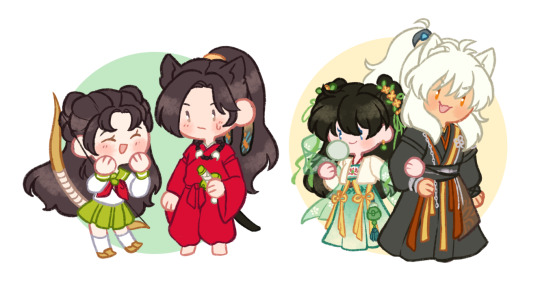
Why Inuyasha fans should watch hit Chinese fantasy drama Love Game in Eastern Fantasy.
This wonderful art was created by Sparky! You can find her twt account here, and if you're interested in commissioning something yourself, her vgen account here.
I promised I'd make this post, and I also promised I'd commission some chibis of the lead pairs from both shows swapping outfits as to entice you, so here we go. If the adorable art isn't enough to convince you, read this way!
Love Game in Eastern Fantasy is a 2024 Chinese fantasy drama starring Esther Yu and Ding Yuxi. It's thirty-two episodes long. The show has been a big hit in China due to its charming storyline, hilarious meta-humor, strong performances, beautiful costumes and sets, and well crafted characters. Let me get this out of the way first; yes, that is the English title of the series, and yes it's a pretty bad and unappealing sounding title. It's not uncommon for English titles of Chinese dramas to be kind of terrible. I promise it does not reflect the quality of the series itself. The original Chinese title is 永夜星河 (Yong Ye Xing He: Eternal Night of Starry River). This, although pretty, doesn't have much to do with the series either. For the rest of the post, I will be abbreviating the title to LGIEF.
Let's start with an introduction of our lead characters, then we'll go into why I think Inuyasha fans specifically will enjoy this series, although it should become quite obvious along the way.
Ling Miaomiao

Funny, compassionate, and clever, Ling Miaomiao is a young woman from the twenty-first century who is transmigrated out of her boring every day work life and into the novel Catching Demons. Once inside, she retains her memories of the real world and is given two main tasks by 'the system', the mysterious force that governs her stay in this parallel world; the first one is to stop the catastrophe of heaven, a potentially world ending event, and the second... is to make the second male lead of the original novel, a standoffish, suspicious young man named Mu Sheng, fall in love with her.
The problem is that she hasn't been transmigrated as Ling Miaomiao, but is instead in the body of the character of Lin Yu, the second female lead of the original novel, as well as an antagonist. Well, Ling Miaomiao doesn't have it in her to be a villain, and besides how can she capture the affection of Mu Sheng that way? It turns out that the best way to do so is by being herself. But of course, as goes in these stories, she didn't expect to fall in love along the way.
Miaomiao is, in addition to having one of the best wardrobes I've ever seen, so charming, so cute, so amusing, and such a sunshine of a character. She's not pliant. She sticks to her guns and doesn't take shit, but she's also kind, tolerant, accepting, and borderline fearless at times. Esther Yu has wonderful comic timing. She is a delight.

Mu Sheng
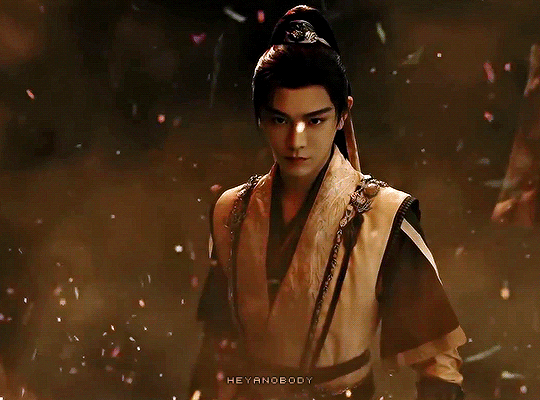
Courtesy name 'Ziqi', and what I'll be referring to him as in this post. Ziqi is the second male lead in the novel Catching Demons and the adopted younger brother of the novel's protagonist, Mu Yao. He's very close to his sister, and his self esteem is debilitatingly low, to the point he sees protecting her as the only reason for his existence. In the original novel, he becomes an antagonist at a later point.
Ziqi and his sister, Mu Yao, are demon catchers. They're both powerful cultivators (magic users) and warriors. Her family (and his adopted family--- sort of) were all killed by a powerful demon called the Resentful Woman about a decade before, and Mu Yao is on a quest to find her and defeat her, with Ziqi tagging along. But Ziqi has a secret, and it's one that he is terrified of his sister, who abhors demons, finding out. He is half demon himself. A gold ribbon he wears in his hair at all times protects him, keeping his true identity hidden unless it's removed.
He loathes his heritage and sees it as shameful-- until Ling Miaomiao comes along. Ziqi is brusque, angry, and bitter. He has a front of bravado, but is DEEPLY insecure. He starts out very rude. He's love starved but shirks away from love. He's jaded, but extremely innocent. He's a tsundere (even described as such in official material, which I found funny). His actor pulls off the best sad kitten eyes any man ever has, and your heart will break for him.

To clarify, although in the original novel Catching Demons, Ziqi and Miaomiao are not the leads, in the drama Love Game in Eastern Fantasy, they 300% are! This is a story about what happens when the second leads... become the leads.
Other Major Characters
Mu Yao- Ziqi's adopted older sister. He is extremely close to and protective of her, but her hatred of demons due to her past makes it so revealing his secret seems impossible. Mu Yao is a demon catcher from the famous Mu clan, which has been the most prominent demon catching clan for nine hundred years. She is friendly and no-nonsense, and as the story continues, she grows and matures in her views. She is very close to Ling Miaomiao, and she is in love with the original male lead of the novel, Liu Fuyi.
Liu Fuyi- The original male lead of the novel. He starts out quite 'wooden', which I think is deliberate because Ling Miaomiao even commented on him being a badly written character as she read the original novel. However, as the story goes on and he becomes more of a real person, he fills out and ends up likable. Stalwart, calm, and noble, he is in love with Mu Yao but dares not say it. He has a more nuanced, less prejudiced view of demons than Mu Yao does.
Cuicui- The last member of our group of demon catching travelers. Cuicui is a young bamboo demon who quickly bonds with Ling Miaomiao, sneaking along by turning himself into a bamboo hair pin she wears. He is very Shippou in that he adores LMM and bickers with Ziqi, but I actually do like him a lot better than his Inuyasha counterpart. He's quite useful, and he forms a pretty sweet bond with Ziqi over time. I have read that Cuicui is not ever gendered in the original dialogue, but as I'm unsure of this, I defaulted to the gender of his actor (who is a total cutiepie btw).

You can very much see even from here how the main cast really fills those Inuyasha roles! Together, they are the Four Bamboo Masters.
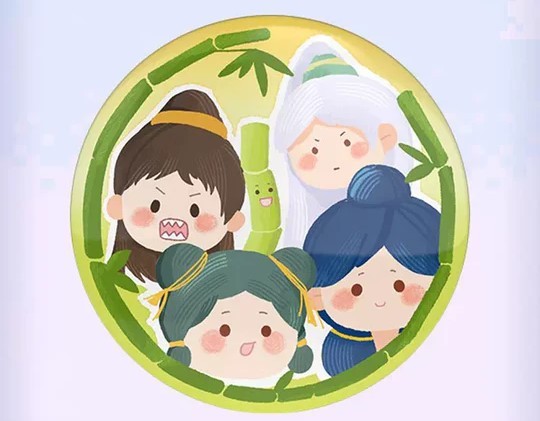
(Actual art of the Four Bamboo Masters+Cuicui by artist extraordinaire Ling Miaomiao)
The World
The universe of Catching Demons is a fantasy ancient China filled with yao which is the Mandarin Chinese word for demons of the variety featured in the series. If you understand youkai, you somewhat understand yao.
Japanese "yokai" is the Japanese transliteration or pronunciation of the Chinese term "yaoguai" and involves similarly strange creatures, with both languages using the same Chinese characters to describe them. ( x )
Yao in this world are for the most part, morally neutral, but are generally viewed as evil by humans. Those that are evil often ended up going that direction because of humanity's actions toward them. They can form from aspects of nature; bamboo, foxes, water, cats, birds, etc. There are also object based yao based on mirrors, paintbrushes, etc. Inuyasha fans will definitely see some similarities in the folklore between the series.
As with many high budget Chinese dramas, the settings are beautiful and atmospheric, capturing both the gorgeous architecture, clothing, etc. of a fantasy ancient China, as well as the nature and magic of this specific world. The effects are quality for a tv production, and the costumes, makeup, and wigs are next level. There's so much rich detail in them. Ling Miaomiao's hair ornaments alone deserve an entire post praising them.

Since this is also a transmigration story, the mechanics of 'the system' often come into play. This results in some of the best humor in the series. Ling Miaomiao's battle with the system is hilarious and clever. It's rendered as if it is a video game, with LMM in the early episodes 'dying' and having to respawn... many, many times. In order to clear her mission, Ling Miaomiao must get Mu Sheng to 100% favorability toward her, which is calculated adorably by little mushroom shaped demons.

One of the biggest appeals of the series is Miaomiao's modern mind set in this ancient world, and the fact that since she believes this to be just a novel at first, she is hysterically meta, often commenting on the quality of the story and well...

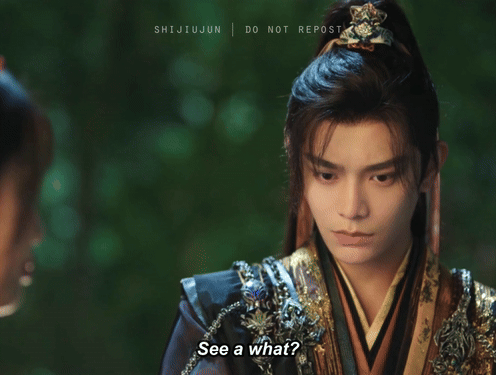
The Love Story
This love story is like crack to Inuyasha/Kagome fans (aka me). You should have gotten the vibe of the obvious character similarities from above, but their romance plays with so many of the tropes that made InuKag great and pulls them off so well. It doesn't feel like a rehash, it just happens to use similar tropes to great impact.
Look, this scene is spoiler-y for episode eleven, but I just think that if anything is going to sell you on this show, it's probably going to be this scene, so watch it.
youtube
In it, Ziqi has been forced to remove his hair ribbon to battle a demon, because he's not near strong enough without doing so. The rest is self explanatory from the video.
This is a really gentle love story. It has a lot of what I love about InuKag, which is a casual intimacy, a soft, sometimes unspoken affection, and a chemistry between the characters that speaks of a deep connection that goes far beyond just their romantic attraction. These are two people that click, and it's beautiful to watch the way they impact each other. It's about support, belief, trust, and acceptance. They start off very much on the wrong foot, as our intrepid lovers in IY do, but when they come together, it's all of that and more, plus a level of playful bickering.
I, Mu Ziqi, swear to the heavens that if I lose you somehow, I'll come back to find you. No matter how far it is, no matter how hard it is, I will bring you back.

And I am not the only one who has noticed the similarities to Inuyasha:
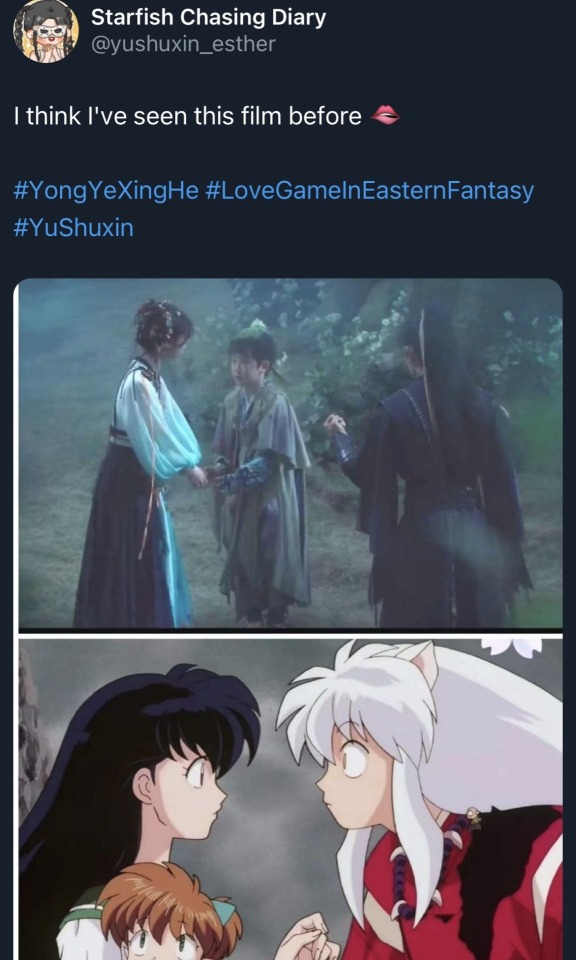

1, 2
Plus all the likes and reblogs on this post.
What else does the show have to offer?
I don't really want to go further into spoilers, but I love the themes of this story. It's about learning to love yourself, trust, and compassion of course, but it also ends up being a super uplifting commentary on the power of storytelling, memory, the impact fiction can have on us, the way love is laced into everything we create, and the power simple acts of kindness can have. The value of this series goes far beyond just being similar to Inuyasha, although that's definitely a plus.
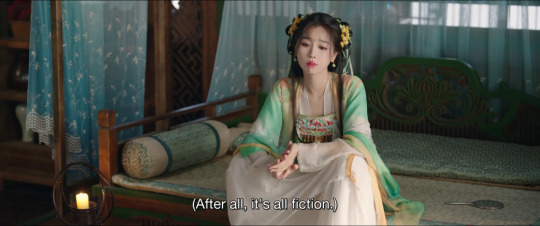
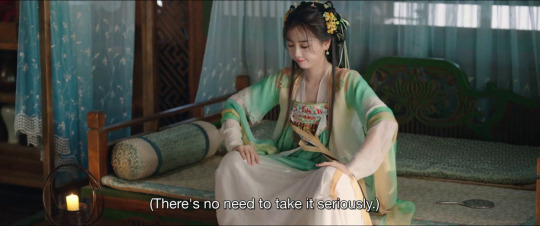
Famous last words from early series Ling Miaomiao. Girl, you have no idea.
Does it have a happy ending?
Yes. I will leave it at that.
But I've never watched a Chinese drama...
This is a great place to start. There's little to nothing that should confuse you as a first time watcher. It's a perfect introduction.
Where can I watch it?
Luckily, unlike a lot of Cdramas, LGIEF is extremely accessible and available on several streaming sites. It's on Netflix, Viki, Youtube (up to ep twenty-three), and WeTV. If you have a Netflix account, it's there right now!! Audio is Mandarin Chinese of course, but subtitles are available in several languages.
If you do watch it, let me know! And make sure to share this post of course.
I watched LGIEF and I loved it (of course). What should I watch next?
Here's a few Chinese dramas that are readily available streaming, that I think LGIEF fans would enjoy:
Love Between Fairy and Devil (thirty-six episodes, streaming on Netflix, Viki, and IQIYI): When a low-ranked fairy accidentally resurrects a powerful demon, their fates become cosmically entangled as the world is thrown into turmoil.

For me, not just my favorite fantasy drama of all time, but my favorite drama period. Like LGIEF, this drama stars Esther Yu in the role of the heroine. One of the screenwriters is also the same as LGIEF, and much of the production team is similar.
This is a gorgeous story of the redemptive power of love of all kinds, of breaking the cycle of war, and of defying fate no matter the cost. A fantastic cast, stunning costumes, and the best soundtrack ever. If you're like me and are wary of the 'good girl changes the bad boy' trope, don't be. Dongfang Qingcang (the male lead) is an amazing character; he's deep and layered and complex, and he is never actually a villain. His trauma is convincing, and everything about him is so, so good. Xiao Lanhua is the heroine. Her character arc is so lovingly done. The two leads don't change for each other, they change because of each other. It's simultaneously one of the funniest dramas I've ever seen and devastatingly heartbreaking. You will laugh, you will cry. Happy ending though, I promise.
The Romance of Tiger and Rose (twenty-four episodes, streaming on Amazon Prime, WeTV, and Viki): A young screenwriter falls ill while working on a script and wakes up as one of her characters.

Confession that I am still working on watching this one, but it's quite popular and the first episodes are charming. It's mainly on here because it stars Ding Yuxi (Ziqi) as the love interest in another transmigration story. It's also not as long as a lot of other dramas, so it's a bit less of a commitment. It's a well known drama that is highly rated in most places.
Destined (forty episodes, streaming on IQIYI): Liu Yuru has suffered in her family; her only hope is to marry her crush, but fateful events force her to marry a rumored playboy from a rich family.

This is not the most appealing summary, but I promise it's misleading. This show is good. The main couple is ride or die, and they become best friends long before they become a couple. The heroine is extremely smart, capable, and business savvy. The hero is charming, funny, and so charismatic. It's the most fun you will ever have watching people do business (I kid; there is business, but there is so much more to the plot). The supporting cast is fantastic, and the relationships!! Wonderful friendships between women, wonderful friendships between men, and wonderful platonic friendships between men and women. SUPER good at subverting tropes. This is a costume drama, not a fantasy, but you won't miss the magic. Oh and did I mention this is by the screenwriter behind LGIEF and LBFAD?
Love You Seven Times (thirty-eight episodes, streaming on IQIYI): It tells the story of Xiang Yun, a fairy from Marriage Pavilion who becomes entangled with the ancient God of War, Chu Kong. Because of this encounter, they must go through tribulations in the human world seven times.

Stars Ding Yuxi (Ziqi) in the role of the hero. An ultimately flawed, but still fun fantasy drama. Gorgeous costumes, wigs, sets, etc., and a lot of heart. Don't expect writing as slick as some of the other dramas here, but do expect to enjoy yourself watching these two immortals discover each other while fumbling throughout seven very different lifetimes. Each lifetime has its own very unique vibes and aesthetic, and seeing how they all pan out if half the fun. Plus, if you like Inuyasha, you absolutely must see the arc where Chu Kong becomes a cat demon.
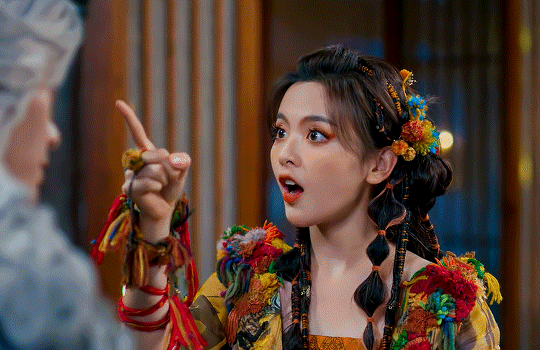
Moonlight (thirty-six episodes, streaming on Amazon Prime, Viki, IQIYI): After graduating university with a major in financing, Chu Li successfully enters her dream company, Yuan Yue Publishing House. There she meets author Zhou Chuan, who is said to be gentle as a jade when he's really not.

I can’t believe I forgot this at first! I haven’t seen it yet, but it’s a previous collaboration between Esther Yu and Ding Yuxi from 2021. If you enjoy their chemistry and the way they play off each other in LGIEF, you may want to check it out. It’s a modern romance drama, which isn’t as much my thing, but it’s deeply loved by a lot of drama fans and has great reviews.
#inuyasha#inukag#love game in eastern fantasy#yong ye xing he#I FINISHED THE POST!!!#kagome higurashi#higurashi kagome#ling miao miao#mu sheng#commission
240 notes
·
View notes
Text






Windenmere Equestrian Estate 🗝️
Nestled in the misty countryside of Windenburg, Windenmere Equestrian Estate is a stately manor that has stood the test of time, watching over its expansive fields and pastures for centuries. Built during an era of prosperity, this ancestral home once bustled with the life and spirit of the Windenmere family, who earned their wealth through a thriving horse-breeding empire. Known for producing some of the finest thoroughbreds in the region, the estate became legendary, woven into the fabric of Windenburg’s equestrian legacy.
The estate’s architecture boasts a blend of Tudor and Gothic Revival that reflects its noble heritage. Grand stone walls, softened by creeping ivy and moss, hint at the manor’s age, while arched windows and leaded glass panes cast a dappled light into the stately interior. Upon entering, one steps into a world untouched by time. The grand foyer features polished marble floors, framed by intricate woodwork that speaks to the craftsmanship of a bygone era. Elaborate tapestries and portraits of past Windenmere family members and their prized horses hang along the corridors, creating a silent gallery of the estate’s illustrious history.
The heart of Windenmere is its equestrian grounds, where generations of horses have been bred, trained, and celebrated. Stables constructed with the finest oak stand beside an aged, but well-kept, riding arena, and beyond lies the estate’s private trails that wind through ancient oaks and rolling hills. Even the air here seems steeped in memory, carrying the faint sounds of galloping hooves and distant echoes of past triumphs.
Today, Windenmere Equestrian Estate stands as a living tribute to the Windenmere family’s legacy, preserving their passion for horses and their place in Windenburg’s storied past. It is a place where time seems to pause, inviting those who enter to step back and experience the elegance, tradition, and quiet strength of this historic home.
Forged in tradition, crafted for champions. . .⚜️
Available for download on the gallery! :)
Gallery ID | briannaasims
No CC build
§168,468
Residential Lot
4 bed, 4 bath
64 x 64
⚲ Von-Windenburg Estate
Packs Used: Base Game, Horse Ranch, Growing Together, Cottage Living, Snowy Escape, Island Living, Get Famous, Cats & Dogs, Get Together, My Wedding Stories, Realm of Magic, StrangerVille, Jungle Adventure, Vampires, and Romantic Garden
#sims 4#coastal cowplant#simblr#the sims 4#sims build no cc#no cc build#show us your builds#sims 4 build#the sims community#the sims build#sims build#sims 4 windenburg#windenburg#no cc lot#ts4 nocc#the sims 4 simblr#ts4 simbrl#ts4 simblr#ts4#sims4#the sims#no cc#sims 4 screenshots#the sims screenshots#sims#ts4 screenshots#coastal cowplant builds
292 notes
·
View notes
Note
Firstly I adore how you write the arcane crew with kids ❤️ What if they have kids but the reader us a feline vastaya ? How mixed would they be ?
ᴋɪᴛᴛᴇɴꜱ?
ᴊᴀʏᴄᴇ | ᴠɪᴋᴛᴏʀ | ᴊᴀʏᴠɪᴋ | ᴠᴀɴᴅᴇʀ | ꜱɪʟᴄᴏ/ᴊɪɴx || ꜰʟᴜꜰꜰ/ᴀɴɢꜱᴛ-ɪꜱʜ || 8372 ᴡᴏʀᴅꜱ || ᴡᴀʀɴɪɴɢꜱ: ᴅɪꜱᴄʀɪᴍɪɴᴀᴛɪᴏɴ ᴀɢᴀɪɴꜱᴛ ᴠᴀꜱᴛᴀʏᴀ'ꜱ
ʀᴇQᴜᴇꜱᴛ ᴀɴꜱᴡᴇʀ: ᴀᴡᴡ ᴛʜᴀɴᴋ ʏᴏᴜ! ɪ ᴊᴜꜱᴛ ᴘᴜᴛ ᴍʏ ʜᴇᴀʀᴛ ɪɴᴛᴏ ʜᴏᴡ ɪ ᴛʜɪɴᴋ ᴛʜᴇʏ'ᴅ ᴀᴄᴛ ɪꜰ ᴛʜᴇʏ ʜᴀᴅ ᴄʜɪʟᴅʀᴇɴ! ᴀɴᴅ ᴊᴜꜱᴛ ᴛʜɪɴᴋɪɴɢ ᴀʙᴏᴜᴛ ᴀ ᴄᴜᴛ ᴍɪx ʙᴇᴛᴡᴇᴇɴ ᴛʜᴇᴍ ᴀɴᴅ ᴀ ᴠᴀꜱᴛᴀʏᴀ ɪꜱ ᴀᴅᴏʀᴀʙʟᴇ! ɪ ᴡʀᴏᴛᴇ ᴛʜɪꜱ ʙᴀꜱᴇᴅ ᴏꜰꜰ ᴍʏ ᴏᴛʜᴇʀ ᴠᴀꜱᴛᴀʏᴀ ꜱᴛᴏʀʏ, ꜱᴏ ɪ ʜᴏᴘᴇ ʏᴏᴜ ᴇɴᴊᴏʏ! <3
ʀᴇᴀᴅᴇʀ | ᴊᴀʏᴄᴇ | ᴠɪᴋᴛᴏʀ | ᴠᴀɴᴅᴇʀ | ꜱɪʟᴄᴏ | ᴊɪɴx

JAYCE
Years after Jayce’s first encounter with Y/N, their bond had deepened, not just through shared interests, but through the way they balanced each other’s worlds—science and art, reason and magic. Their love had brought forth a daughter named Elena, a perfect blend of both their spirits. Elena inherited her father’s sharp, analytical mind and her mother’s free-spirited energy. In looks, she was a striking mix of both. She had her father’s deep, expressive brown eyes and tan skin, with a soft, angular face that reflected his features. From Y/N, she inherited a darker, more mysterious quality—her mother’s delicate pointed ears and long, flowing hair that shimmered with a hint of silver. Elena’s tail, inherited from Y/N’s Vastaya heritage, was an elegant and playful addition, often swishing with excitement as she moved.
Her childhood was filled with exploration, whether through the scientific marvels of Piltover or the ancient mysteries Y/N had whispered about while they crafted together.
=
One day, when Elena was around 10, she accompanied her parents through the bustling Piltover marketplace. The stalls were alive with vendors selling everything from mechanical parts to exotic herbs. Elena darted from one stall to the next, mesmerised by the intricate clockwork trinkets, the vivid fabrics, and the glittering jars of strange potions.
"Mom, look!" Elena tugged at Y/N’s sleeve, halting in front of a stall filled with coloured threads that shimmered like the paints her mother used in her art. Y/N crouched beside her daughter, smiling warmly.
"That's beautiful, Elena," Y/N said softly, brushing a strand of hair behind her ear. "Just like your work."
Elena's eyes sparkled. "I want to make something with these. Maybe a new quilt for the house!" she said excitedly.
Jayce, overhearing them, smiled with amusement. “Already planning ahead, huh? You do know your mum’s quilts are legendary in Piltover, right?”
Y/N chuckled, eyes softening at the thought. "She has a good teacher."
Elena beamed with pride, her excitement growing as she skipped to another stall. Her eyes landed on a peculiar set of enchanted crystals that hummed with strange energy. Her fingers hovered over them, intrigued by their shimmer.
“Are you sure those are safe?” Jayce asked, his protective instincts flaring.
Elena turned with a cheeky grin. “Of course! They’re just… magical.”
Y/N and Jayce exchanged a glance, realising their daughter was a fascinating blend of both their worlds—the rational mind of a scientist and the wonder of an artist with an affinity for the mystical.
=
As the day wore on, Elena continued her exploration, picking up trinkets and curious finds along the way. She was their child through and through—always reaching for something new, whether in the mechanics of Piltover or the untold secrets of magic.
Jayce watched his daughter from a distance as she carefully examined a piece of clockwork, her brow furrowed in concentration, and smiled. He saw so much of himself in her—a mind that could never be contained within the bounds of tradition, always reaching for more.
And as Y/N walked beside him, their hands intertwined, they knew their daughter would continue to weave their worlds together in ways they had never imagined. From Piltover’s mechanical wonders to the untold mysteries of magic, Elena was destined to make her own mark.
Their life in Piltover wasn’t always easy—being a Vastaya in a city of high society meant stares and whispered comments, especially when they strolled together as a family. But Y/N stood tall, her tail swaying behind her as she held Jayce’s hand firmly. The occasional glance or whisper from a passerby didn’t faze her. She had learned to rise above it long ago. Jayce, ever the protector, offered her silent reassurance with his touch, the steady strength of his presence beside her.
"Careful, Elena!" Y/N called after their daughter, who had run ahead in excitement. "Don’t run off too far."
Elena turned with a wide grin, slowing her pace. "I’m just looking for something fun!" she replied, her voice filled with the wonder of a child exploring the world.
A few people glanced at Elena’s energetic enthusiasm, the contrast to the calm sophistication of Piltover’s streets. Y/N caught the looks and flicked her ears in amusement, but Jayce didn’t miss a beat, squeezing her hand as they walked side by side. "She’s got your spirit, doesn’t she?" he teased.
Y/N smiled, her tail flicking behind her as she watched Elena. "She’s got a bit of both of us in her. I just hope she doesn’t get into too much trouble."
"You two are a lot of trouble together," Jayce teased back, his lips curling into a smile.
=
The warmth of the moment was something Jayce cherished. When they first met, he could never have imagined a life like this—a life filled with love, family, and a deep connection to a woman so different from him. Y/N, with her vast knowledge of Zaun, her calming presence, and her fierce protectiveness, had swept him off his feet. She had her own strength, her own struggles, yet she had always supported him, as he had supported her.
And then there was Elena a living testament to the way they’d both changed and grown. Elena was a reminder that love could transcend all—whether it be between cities or species. She had inherited Jayce’s insatiable curiosity and Y/N’s ethereal presence, a calm and warmth that grounded everything. She was the perfect mix of their worlds, a child with a fierce mind and an open heart.
As they walked further through the market, Elena suddenly stopped in front of a stall brimming with art supplies—paints, brushes, and sketchbooks. Her eyes widened with excitement.
"Mum! Look!" she exclaimed, tugging at Y/N’s sleeve. "They’ve got paints and all the colours you use for your lessons! Can we get some?" Her fingers traced the vibrant shades, her imagination alight with possibilities.
Y/N chuckled and knelt down beside her daughter. "You’ve got a good eye, sweetheart. These would be perfect for some new artwork. Let’s pick out the colours we need, and we can work on something together."
As they lost themselves in the moment, a passerby lingered a bit too long, his eyes darting from Y/N’s tail to Elena’s pointed ears. Y/N noticed and smiled politely, but the man quickly averted his gaze, muttering something under his breath. Jayce didn’t miss it either. He shot the man a pointed look, his jaw tightening, but he didn’t say a word.
Elena, her tail flicking behind her in excitement, jumped up. "Can I make something for Dad too? Like you always do for him, Mum?" she asked eagerly, her face lighting up with the joy of creating something special for her father.
Y/N smiled softly, resting a hand on Elena’s shoulder. "Of course, darling. We’ll make something special. How about a painting for Dad to hang in the workshop?"
Jayce couldn’t help but laugh softly. "You two will have a whole gallery before the day’s out, won’t you?"
Y/N winked at him playfully. "Perhaps. But we’ll make it something extra special for you. A masterpiece from both of us."
Elena nodded enthusiastically, her bright eyes alight with excitement. "Yeah, Dad! You’ll love it!"
Jayce smiled, kneeling down to their level. "I can’t wait to see what you both come up with." His heart swelled at the thought of his daughter and Y/N creating something together—an expression of their love for him. It was moments like this that made everything worthwhile.
As the family continued their walk through Piltover, Jayce couldn’t help but feel a deep peace settle in his chest. He had never believed in destiny, but the life he had now felt right—right in a way he couldn’t quite explain. Y/N and Elena were his world, and he would do anything to protect them. The life they had built, the family they had created, was everything he had ever wanted, even if it had come in ways he hadn’t expected.
There was a perfect balance in their little family—Jayce’s determination and vision, Y/N’s wisdom and gentleness, and Elena’s playful energy and unyielding love for both her parents. Together, they were a testament to what could be built when two people from different worlds came together with understanding, compassion, and love. Elena had the best of both worlds in her, and that made her something rare, something special.
=
As they headed home, the sun setting behind them, Jayce whispered softly to Y/N, "Thank you for this... for everything."
Y/N’s eyes softened as she leaned into him. "It’s not just me, Jayce. It’s all of us—together."
With her head resting against his shoulder, they walked into the future hand in hand, ready to face whatever challenges came next. In that quiet moment, surrounded by the warmth of their love, Jayce knew that the future was theirs to shape, together. The stares, the whispers, the discomfort of others couldn’t touch what they had—what they had built. Nothing could.

VIKTOR
Years had passed since that fateful night in the alleyways of Zaun, when Viktor had first reached out to Y/N, guiding her away from the chaos of the streets. That moment had been the beginning of a journey neither of them could have predicted—a journey filled with both hardship and unexpected tenderness. As the years went by, their bond grew stronger, woven together by shared moments of quiet understanding, and an unspoken promise to never let go.
Viktor’s path had eventually led him to Piltover, a city of progress, knowledge, and endless possibility. The brilliant Heimerdinger had recognised Viktor’s genius and, after much persuasion, brought him to Piltover to become his assistant. It had been a turning point in Viktor’s life, a chance to leave Zaun behind and be recognised for his talents. But even in the gleaming towers of Piltover, Viktor had never left Y/N behind. She had been by his side through it all, as steadfast as ever, and it was in her presence that he found his peace.
Though Piltover was unfamiliar, even overwhelming at times, Y/N had adapted with grace. The city's bustling streets and towering structures felt a world apart from the alleys of Zaun, but Y/N’s ability to blend her Vastaya heritage with the world of Piltover’s scientific and artistic communities had made her a quiet but respected presence. Her talents—both as a healer and a seamstress—were highly valued, and over time, she had carved out a place for herself, always with Viktor’s unwavering support.
Their shared history, their differences, and their shared journey from the broken streets of Zaun to the polished city of Piltover were reflected in their daughter—Lira.
Lira had inherited both of her parents' qualities, yet she was truly a reflection of both their worlds. She had taken more after Y/N in many ways—her skin, the same faint greyish hue, her long, delicate ears, and her tail, which swished expressively behind her. But there was also something of Viktor in her, something sharp in her eyes—a quiet intelligence, an almost unnatural understanding of things. Lira was a blend of their two worlds, and in her, they saw the future—a new generation, capable of bridging the divide between science and nature.
They had named her Lira for a reason—a name that meant "song" in the old language of her mother’s people. Lira was a name that symbolised harmony, the blending of two very different worlds. It was also a tribute to her mother's Vastaya heritage, with the hope that, like the name itself, she would find a way to bring unity and understanding to the world, just as her parents had.
Viktor’s heart would swell with pride each time Lira came running into his arms. Her small hands would touch his cane, her eyes full of wonder as she asked him to explain the intricacies of his latest invention. Though Viktor had always been focused on logic, reason, and progress, the sight of his daughter’s curiosity, her hunger to understand the world, softened him in ways he never thought possible. Lira would sit beside him for hours, watching his work with wide eyes, absorbing every detail with an intensity that made Viktor realise that, perhaps, the future was more than just a series of equations. It was in the small moments—like the gleam in his daughter’s eyes when she solved a problem or the way her fingers danced across the pieces of his machines, as though she were already a part of his world.
But Lira also shared her mother’s creativity, her deep understanding of beauty in its many forms. While Viktor worked tirelessly at his projects, Lira would often be by Y/N’s side, learning the intricate arts of weaving, stitching, and crafting. Y/N would teach Lira how to create beauty from the raw, the imperfect—how to use her hands to shape something meaningful from the world around her. Whether it was repairing a tear in a favourite shirt or creating a new quilt from old scraps, Y/N would impart lessons that spoke not only of the skill of the craft but of the deeper understanding of the world’s rhythm—its delicate balance between nature and the manmade.
=
One evening, the soft glow of Piltover’s lights filtered through the windows of their home, casting long, gentle shadows across the room. Viktor was at his desk, lost in thought as he worked, his mind consumed by the details of a new project he was collaborating on with Heimerdinger. The familiar hum of machinery drifted in from the workshop, a constant companion in Viktor’s life. Yet, despite his mind’s focus, his thoughts kept drifting back to how much had changed since that first moment he had helped Y/N in the alley.
Behind him, Viktor heard the soft rhythm of Y/N’s sewing machine—a comforting sound that always brought him a sense of peace. Lira’s voice bubbled up with questions, her soft laughter filling the house as she worked with her mother. The scene was so familiar, so comforting, that Viktor couldn’t help but close his eyes for a moment, letting the peace of it wash over him. It was a far cry from the days of Zaun—no more threats lurking in the shadows, no more hunger or cold.
“Viktor?” Y/N’s voice, warm and calm, broke through his reverie. He turned in his chair to see her standing in the doorway, a soft smile on her face. Lira was perched on her mother’s shoulder, her small arms wrapped around Y/N’s neck as she gazed at her father with wide, eager eyes.
Viktor’s heart swelled with love at the sight of them. “Yes, lásko” he replied, his voice thick with affection. (Love)
Y/N crossed the room slowly, her movements as graceful as ever despite the tiredness that sometimes lingered in her body. She placed a gentle hand on Viktor’s shoulder, grounding him in the moment. “Lira’s been asking about your work again. She wants to understand how it all fits together.”
Viktor smiled, his eyes shifting to Lira, who was now standing at his side, her bright eyes fixed on him with an intensity that reminded him so much of himself as a child. “Does she now?” Viktor said with a chuckle. “She’s certainly persistent.”
Y/N smiled, a touch of amusement in her voice. “Just like you,” she teased. “She wants to know how things work, how they fit together.”
Lira’s golden eyes widened with excitement, and she hopped down from her mother’s shoulder to run to Viktor’s side. “Papa, how do you make the parts move like that?” she asked eagerly, her tiny finger pointing to the small mechanical model sitting on his desk.
Viktor’s heart swelled with pride and affection. He took a deep breath, then gestured for Lira to come closer. “Well, miláčku,” he began, bending down to her level, “it’s all about understanding the way the pieces fit together. It’s a bit like how your mother weaves her fabrics, you see?” (Sweetheart)
Lira tilted her head, processing the information, before repeating thoughtfully, “Like weaving?”
“Yes,” Viktor continued, his voice warm with encouragement. “Everything, whether it’s a machine or something more natural, is connected in some way. It’s just a matter of finding the right way to put it all together.”
Y/N watched the two of them, her heart full as she observed the bond that had flourished between Viktor and their daughter. Lira was a living testament to the way both of them had shaped her. The curiosity, the drive, the sense of wonder—all of it was there, in her.
The three of them stood together in that quiet moment, a family forged from the strength of their love, their shared creativity, and their unwavering belief in each other. The lights of Piltover shone brightly outside, but inside their home, there was a warmth that no machine could replicate. Together, they were a family—strong, united, and ready to face whatever the future held.
And as they stood there, Viktor couldn’t help but feel an overwhelming sense of gratitude. For the journey, for the lessons, for the love that had filled his life in ways he never thought possible. And for the tiny girl with the golden eyes, whose presence had made it all worthwhile.
“I’m glad we’re here,” Viktor whispered, his voice thick with emotion.
Y/N smiled softly, resting her head on his shoulder as Lira clung to his side, her golden eyes wide with curiosity. “So am I, Viktor,” she said, her voice filled with quiet contentment. “So am I.”

JAYVIK
Several years had passed since that long, weary day in the lab. Time had a way of softening the sharp edges of past pain, but for Y/N, some wounds still lingered, just beneath the surface, waiting for the world outside to remind her of its harshness. Yet, in spite of these lingering scars, brighter days had emerged—days filled with laughter, love, and the indescribable joy of watching her children grow, finding their own voices in the world that had once felt so unkind.
On this particular afternoon, Y/N strolled through the park, her twins—Elowen and Cassian—holding tightly onto her hands as they skipped beside her. Elowen, with her wild curls bouncing in the breeze, had inherited Viktor’s meticulous nature but also Y/N’s boundless curiosity and wild spirit. She was always the first to ask questions about the world around her, eager to uncover the mysteries of both magic and science. Cassian, on the other hand, with his mischievous grin and dark eyes that mirrored Jayce’s, thrived on adventure. His curiosity often led him into trouble, but his infectious joy in exploring made up for it. Together, they were a perfect blend of their parents—two little bundles of energy, wonder, and mischief.
Viktor, leaning on his cane as always, followed closely behind them. His faint but content smile revealed how deeply he cherished these moments—the ones where time seemed to slow down, where the world faded away, and only the people at his side mattered. He was proud of his children, proud of Y/N, and proud of the family they had built together. And there was Jayce, walking beside him, just as devoted, just as protective. Y/N could see the way his eyes softened whenever he looked at their children, his love for them as fierce and unconditional as her own. Together, the three of them made a home, one built on love, understanding, and a shared commitment to protect each other from the cruel realities of the world outside.
=
But as they walked through the park, something stirred in Y/N—an old discomfort, a prickle of awareness that she couldn’t shake off. At first, it was subtle—just a few sideways glances from passersby. But as they continued, the stares grew longer, the whispers more frequent. She could hear the hushed voices, barely masked by the rustling of leaves and the laughter of children. Some of the looks were filled with curiosity, some with disdain. The word "unnatural" caught her ear, and muttered remarks about her “strange” heritage reached her with painful clarity.
Her chest tightened, and she could feel the familiar weight of their gaze bearing down on her. The faces that looked upon her with suspicion, fear, and even hatred never failed to cut through her, no matter how much time had passed. The tightness in her chest grew as she glanced down at Elowen and Cassian, who were oblivious to the tension in the air. They were laughing, caught up in their joy, but Y/N saw the way the world would see them too. Her children—her precious children—were not exempt from the cruel judgment. Their innocence would never be enough protection from the harshness of the world.
Viktor noticed the shift in her posture before she realised it herself. Her grip on Elowen and Cassian’s hands tightened, and her tail, once relaxed behind her, now flicked anxiously. He could see the muscles in her back tense, her ears flattening slightly in response to the murmurs and stares. He knew her so well that he didn’t need to ask. But he did, anyway.
“Y/N?” Viktor’s voice, low and cautious, reached her. He stopped beside her, gently placing a hand on her shoulder, his cane resting beside him. His other hand reached for hers, a quiet offering of support. “Is everything all right?”
Y/N blinked, pulling herself out of her thoughts. She gave him a tight smile, but it was weak, strained. “It’s nothing,” she muttered, her voice faltering. “Let’s just go home.”
Viktor’s brows furrowed in concern. He knew her too well to be fooled by her words. He glanced around and saw what she saw—people still staring, still whispering. He could feel her anxiety, a tight knot in his chest as he struggled with the helplessness of not being able to shield her from it all. He said nothing, though, as they turned to leave, both of them guiding their children with quick, deliberate steps.
Cassian, sensing the shift in the mood, looked up at his mother with wide, innocent eyes. His gaze, full of concern, didn’t escape Y/N. “Mum? Why are we going home? We were having fun!”
Y/N forced a soft laugh, bending down to ruffle his dark hair, her heart aching with the weight of his words. “I know, sweetheart. We’ll come back another time, I promise.”
Elowen, always attuned to the emotions around her, glanced up at her mother with a furrowed brow. Her bright eyes, much like Viktor’s, narrowed with concern. “Are we going to be okay, Mama?”
Y/N’s heart clenched as she looked into her daughter’s earnest eyes, those same bright eyes that shone with curiosity and understanding. She kissed Elowen’s forehead gently, a soft whisper escaping her lips. “We’re always okay, Elowen. Always.”
Jayce, who had been walking slightly behind them, caught up and placed a hand on Y/N’s back. He had noticed the subtle shift in her mood, the change that always followed when the world became too much for her to bear. His voice, calm and steady, broke through her thoughts. “Don’t let them get to you, Y/N. They’re just ignorant.”
Y/N gave him a small smile, grateful for the support but not quite able to shake the lingering discomfort. “I know, Jayce. But it doesn’t make it easier.”
Jayce squeezed her shoulder gently. “We’ll make sure they never see the world the way we do,” he said, his tone filled with determination. “We’ll teach them how to rise above it. We’ll show them what true strength is. And they’ll grow up knowing that love and family are the most important things.”
Viktor nodded in agreement, his hand resting gently on her shoulder. “They already know what matters, Y/N. They’re growing up surrounded by love. That’s what will guide them.”
=
They continued their walk home in silence, Viktor keeping a protective hand on Y/N’s back, Jayce walking beside her, a quiet but unwavering presence. His warm smile, though faint, was a silent reassurance that they were all in this together. Elowen was perched on his shoulders, giggling with delight as she tugged on his hair playfully, while Cassian swung from his hand, laughing with each swing. Jayce, as always, did his best to be the stabilising force, effortlessly balancing the responsibility of keeping them safe while maintaining the lightness in his step that made the children feel unburdened by the world outside.
Y/N’s tail flicked nervously behind her, her unease bubbling under the surface despite the joy in her children’s laughter. She could feel the stares, the muttered comments, and the weight of the world pressing against her chest again. Viktor noticed her tension immediately and slowed his pace, coming closer to her side, his hand brushing against hers in quiet comfort. He knew her well enough to recognise the signs of her discomfort, though she was trying her best to hold herself together for the sake of their children.
=
As they neared their home, the murmurs faded into the background, replaced by the warm comfort of familiar streets, the comforting sense of belonging within their own space. Y/N sighed, the tightness in her chest easing as they reached the door. When the latch clicked shut behind them, a sense of relief washed over her like a wave. Here, in the sanctuary of their home, she was safe. She was with Viktor, Jayce, and their children—where the world couldn’t touch them so easily.
Viktor, ever observant, placed a hand on her shoulder, his touch gentle but steady. “I’m sorry,” he said quietly, his voice full of empathy. “I know it’s not easy.”
Y/N exhaled a shaky breath and leaned into him, her head resting against his chest for a brief moment. The steady thrum of his heartbeat soothed her, grounding her in the present, in the love they had built together. “I just… I just want to protect them. I don’t want them to see the world like I do. I want them to grow up free of fear.”
Viktor’s hand moved to the back of her head, fingers carding through her hair in a gesture of care. “They will,” he reassured her. “They have us. And we’ll teach them what matters—love, understanding, and the strength to rise above the ignorance around us.”
Jayce, having entered behind them, placed a hand on Y/N’s other shoulder. He leaned down, pressing a soft kiss to her cheek, his voice low but filled with unshakable confidence. “They’ll never know the world like we do. They’re going to be better than that. And we’ll make sure of it.”
Y/N felt her heart swell with gratitude, her breath steadying as she looked at the men who stood beside her. Despite the world’s cruelty, she had this—she had Viktor, Jayce, and their children. Their family was her safe place, a foundation built on love, strength, and resilience. Together, they could weather any storm.
=
That night, as they settled in, Y/N tucked Elowen and Cassian into their beds, pressing gentle kisses to their foreheads. The twins were already drifting off to sleep, their innocent smiles and soft breaths reminding her of the purity of their hearts, untouched by the harshness of the world. “You’ll never have to carry the world’s burdens. We’ve got you. Always,” she whispered.
Her heart ached with love as she pulled the covers up around them, watching over them like a guardian, as Viktor and Jayce quietly stood by her side, sharing the weight of the moment. The world outside could be unforgiving, but within these walls, surrounded by their family, Y/N knew her children would always be safe. They had each other—and together, that was more than enough to face whatever the world threw their way.
With Viktor’s steady calm, Jayce’s boundless energy, and the love they shared, Y/N knew they would find a way through the darkest of times—together, stronger, united, and full of love. With their hearts intertwined, they were a force to be reckoned with, no matter what. And that made all the difference.

VANDER
As the months passed, life in the undercity settled into a familiar rhythm, but things were never quite the same after Y/N gave birth to Kael. The quiet, curious child brought with him a special kind of presence that seemed to resonate deeply within the walls of the Last Drop. From the moment he was born, Kael's appearance caught the eye of everyone in the bar. His features were a striking combination of Y/N and Vander—Vander's strong jawline and broad shoulders, but with Y/N's deep, almond-shaped eyes, shimmering with a mysterious wisdom far beyond his years. His small, cat-like nose and faint markings on his skin were unmistakable signs of his mother’s Vastaya heritage, marking him as something rare, something different in a world where differences were not always welcomed.
They named him Kael, meaning "mighty warrior" in an ancient tongue, as Vander had suggested. The name seemed fitting, not just for his appearance, but for the world he had been born into—one filled with struggle, hardship, and a need for strength. Y/N agreed, feeling the weight of the name as she held her son close. Vander, with his protective nature, already saw the resilience Kael carried, even as an infant, and he was proud to see that strength take root in his son. Y/N felt a similar bond, sensing that Kael was destined to carry a power that neither she nor Vander could fully comprehend.
In the meantime, the children of the Last Drop—Vi, Powder, Mylo, and Claggor—had grown especially fond of Kael. The little boy’s serene presence seemed to calm the chaos of the undercity, and the children couldn’t help but adore him. They took turns helping Y/N with him, vying for the opportunity to hold him, to make him laugh, or simply to spend time with him. Vi, ever the fierce protector, kept a close watch over her little brother, ensuring that nothing could harm him. Even in the midst of the hustle and bustle of the bar, she would often sit beside Y/N and Kael, offering a silent, watchful gaze over the newborn.
Powder, though usually lost in her own world, was particularly enamoured with Kael, often offering him her toys and coaxing a giggle or smile from him, her face lighting up with pure joy when he responded. Mylo, the prankster, joked that Kael would grow up to be a tough kid, always looking out for his sister, and while his words were playful, there was an undeniable truth to them—Kael already possessed a quiet strength that would make him stand tall when the time came. Vi, fiercely protective, always kept a watchful eye on him, whether he was peacefully napping or playing, and would stand guard, her instincts flaring if anything or anyone posed a threat. Claggor, the silent one, gravitated toward Kael, his usual quiet nature softening around the baby as he sat nearby, observing with a gentle, affectionate gaze. It was clear to everyone that, despite their differences, each of them held a deep, protective love for Kael, their bond as strong as family itself.
Y/N couldn’t help but smile at the way her children had embraced Kael. There was a tenderness in the way they interacted with him, a protective instinct that ran deep. Vander, too, found his heart swelling with pride every time he saw Kael surrounded by his "siblings," playing, laughing, and sharing in the simple joy of being together. In a world as harsh as Zaun, moments like these were rare, and Vander appreciated them more than anyone could know. He found peace in seeing Kael grow up in the warmth of his new family, surrounded by those who cared for him and would protect him fiercely.
However, as much as Kael was a light in their lives, the undercity was not without its shadows. Life here was brutal, and not everyone looked upon a Vastaya child with the same warmth that his "siblings" did. It was one thing for Vander and Y/N to protect him within the confines of the Last Drop, but outside, in the rough streets of Zaun, there were dangers lurking at every corner.
=
One day, when Y/N and Vander were busy tending to the bar, they decided to let the kids venture out to explore Zaun for a while. The air was thick with the usual mixture of industry, smoke, and the distant hum of machines. The kids roamed the streets, their laughter echoing off the walls of the narrow alleys, their boundless energy filling the cracks of the city. Vi kept an eye on Kael, who was nestled in her arms, his curious gaze taking in the world around him. Powder ran ahead, giggling as she chased after a small mechanical bird that had caught her eye. Mylo and Claggor wandered together, though Claggor’s eyes were always alert, and Mylo kept up his usual antics, cracking jokes and teasing the others.
It was during this outing that they encountered someone who would test their bond.
A man, clearly down on his luck, spotted Kael from across the street. His eyes narrowed when he saw the child’s markings, his lip curling in disgust. He had no love for the Vastaya, nor for anyone who didn’t belong fully to Zaun or Piltover. The sight of Kael, with his distinct features—a blend of Vander's sturdiness and Y/N’s exotic markings—filled the man with a deep sense of disdain. He muttered something under his breath, his hand gripping the edge of a nearby crate as he approached the group.
“You think you’re one of us?” the man sneered, his voice rough and threatening. “What, you think this little bastard belongs here? A freak like him don’t fit in, not with the city’s blood or with any of you.”
Vi’s protective instincts flared, and she stepped forward, her fists clenched. “Watch your mouth,” she said, her voice low but firm. “Don’t talk about him like that.”
The man, clearly not used to being challenged, took a step closer, his gaze now focused solely on Kael. “I’ve seen your kind before. You don’t belong here,” he spat, his words dripping with venom.
Powder, who had been playing nearby, immediately ran to Kael’s side, standing next to him with her fists raised in defiance. Mylo and Claggor moved in as well, standing shoulder to shoulder with Vi, their expressions serious. The playful antics had fallen away, replaced by the fierce loyalty they had for each other.
“We don’t let anyone talk about him like that,” Mylo said, his usual cheeky grin replaced by a determined scowl. “You need to get lost.”
The man, realising he was surrounded, hesitated for a moment. But his temper flared again, and he sneered. “You’re all freaks, then. What are you gonna do about it?”
=
But before the situation could escalate further, the unmistakable sound of Vander’s voice rang out, deep and commanding as he approached. "I don’t think you’ve been listening," he said, his presence alone enough to make the man hesitate. "You’ll apologise, or you’ll leave. Your choice."
The man looked around at the children, then at Vander, realising too late that he was outmatched. His bravado faltered as he took a step back. "Freaks," he muttered under his breath, his words weak and meaningless now.
But just as he was about to leave, Y/N stepped forward, her eyes narrowing with a fierce protectiveness. Her ears were pinned back, and she let out a low hiss, like a cat cornered in a threat, her stance poised to defend her family. The man paused, momentarily startled by her reaction.
With a final glare at the children, the man staggered off, grumbling to himself, but his bravado had crumbled in the face of Vander and Y/N’s unwavering stance.
The tension in the air evaporated the moment he left. Vi, still holding Kael, looked down at him with a reassuring smile. "See? Nothing to worry about," she said softly.
Powder clung to Kael, her face beaming with pride. "You’re safe, Kael," she whispered, her voice full of admiration.
Mylo chuckled lightly. "Told you you’d be tough, little guy."
Claggor nodded silently, his gaze steady as always, but his actions spoke volumes as he kept a watchful eye on Kael. He wasn’t about to let anything happen to his little brother.
Kael, still a baby, looked up at them all with wide eyes, sensing the love and protection surrounding him. He let out a soft giggle, the sound a reminder that, even in the harshest of places, there was always room for love and family.
Vander and Y/N watched the scene with pride and gratitude, their hearts swelling at the sight of the children’s bond. Despite the chaos of Zaun, there was a rare beauty in these moments—moments when love and loyalty triumphed over hate. Kael was part of something special, something worth protecting, and Vander would do everything in his power to ensure that his son would always know that, no matter how dark the world around them became, he would never be alone.

SILCO + JINX
Years had passed since that fateful moment in the alley, where Silco had broken the chains that bound Y/N, both physically and metaphorically. In those years, the two of them had built something together—an empire forged from shadows and ambition, yet tempered with a bond that neither could fully explain. The world they had shaped around them had grown even darker, but it had become a world that they controlled, one where their power and influence rippled through the streets of Zaun and Piltover.
Silco, ever the calculating figure, had changed in small but undeniable ways. Y/N’s presence, her quiet strength and the way she could bring peace to his otherwise turbulent soul, had carved a place in his heart that he had never imagined. There was still coldness to him, still the calculating mind of a man who would sacrifice anything for power, but Y/N’s unwavering loyalty, her warmth, and the strength of her love had brought a new dimension to him. Silco no longer saw the world only through the lens of domination and revenge. Y/N had taught him that there was a kind of strength in love, and that perhaps there was more to life than just ruling with an iron fist.
The change in Silco wasn’t immediately visible, not to everyone, but Y/N saw it in the way he would hold her hand in the quiet moments after a particularly brutal business deal, or the way his gaze softened when he watched her care for their children. There was an unspoken understanding between them now, something beyond the power plays and dangerous politics that had once consumed them both. They were building a future—not just for themselves, but for the little ones who depended on them.
And then, their daughter was born.
=
She came into the world with a quiet intensity that mirrored both her parents. Her eyes were Y/N’s—bright and full of life, but with a depth that seemed to carry the weight of both their worlds. Her skin, a soft blend of Silco’s smooth, darker tone and Y/N’s lighter, ethereal touch, held the markings of her mother’s Vastaya heritage—small yet distinct patterns that hinted at her mystical bloodline. Silco, who had always been distant and controlled, couldn’t help but gaze at his daughter in awe, as if she were the most precious thing he had ever seen. The first time she cried, it was as though the sound itself cracked open something in him—something that had been sealed off for years.
They named her Sira.
The name felt right—it was simple, yet carried an air of strength and beauty that seemed to fit their daughter perfectly. It was a name that bridged both of their worlds: Silco’s world of control and power, and Y/N’s world of magic and nature. Silco looked at her and saw a future—one where his legacy would live on, not in the empire he had built, but in the strength and intelligence of his child. Y/N looked at her and saw the blending of two worlds that had once seemed irreconcilable, but now came together in the form of their daughter.
As Sira grew, so did the complexities of her existence. To Silco, she was his blood—a living, breathing piece of his legacy, a future that could be molded into his image. To Y/N, she was a connection to her own heritage, a continuation of a line that stretched far beyond the borders of Zaun and Piltover. She was their hope, their love, and their proof that, despite the darkness around them, something good could come from it.
And to Jinx? Well, at first, it was something else entirely.
Jinx had always been fiercely protective of her adoptive parents. They were her family, her everything. She had grown up surrounded by chaos, and Silco and Y/N had been the constant, the ones who had taken her in and treated her as their own. The idea of sharing them, of giving her love and attention to someone else, felt like a betrayal. So when Sira entered the picture, Jinx’s first instinct was to keep her distance, to resent the little girl for stealing the attention that she had always received. To her, Sira was a threat, an intrusion into the fragile space she had carved out in her heart for Y/N and Silco.
But Sira, even as an infant, had an innate charm. It wasn’t just her appearance—a curious mix of the fierce and the gentle—but the way she would giggle and grasp at Jinx’s bright hair or the way her tiny hands would reach out, wanting to touch, to play, to explore. Slowly but surely, the walls Jinx had put up began to crack. The more time she spent around Sira, the more she realised that the little girl wasn’t trying to take anything from her. She wasn’t a threat. In fact, she had a way of drawing Jinx in, of making her feel needed, wanted, and loved in a way that she hadn’t expected.
Sira quickly became the centre of Jinx’s attention. When she was a toddler, Jinx was rarely seen without her, proudly parading her around, holding her outstretched in her arms like a trophy to Sevika, to the gang, to anyone who would look.
"Look at her!" Jinx would say with a mischievous grin, holding Sira up in front of her. "Isn't she just perfect?"
=
At first, Sira was just a quiet baby, taking in everything around her with wide eyes, but she grew into a toddler full of curiosity and joy. Her giggles and the sparkle in her eyes were contagious, slowly softening even the hardest of hearts around her. Even Sevika, who had always been tough and unflinching, couldn’t resist a smile when Sira reached out to her, or when Jinx spun the little girl around, her laugh ringing through the air.
In moments like these, the older woman could hardly resist. The tiny hand in hers, the way Sira’s tiny voice would giggle as Jinx spun her around, the way she proudly showed off the little one as though she were her own—Jinx had finally accepted her role as the big sister, the protector, the one who would teach Sira the ways of their world.
=
Silco watched all of this with an intensity that could only come from a father who was fiercely protective of his daughter and also quietly proud of how his ragtag family had come together, in spite of the violence, the chaos, and the unspoken tension that had once ruled their lives. His dark eyes tracked Sira as she giggled, her tiny hands reaching up for Jinx, who was already spinning her around with a wide grin plastered across her face.
"Jinx," Silco called out sharply, his voice laced with concern as his eyes narrowed. "Careful with her."
Jinx paused, looking over at Silco with mock innocence, but the mischievous glint in her eyes gave away her feigned innocence. "Oh, come on! She loves it," she teased, giving Sira one more quick spin before looking back at Silco.
Silco stepped forward, his protective instincts kicking in, and he held up a hand, his voice suddenly stern. "That’s enough, Jinx." He moved closer to Sira, his eyes softening as he took her from Jinx’s arms. "She’s still too little for that much, alright?"
Jinx raised her hands in mock surrender but couldn’t hide the grin that tugged at her lips. "Alright, alright. You’re such a softie, Silco."
Silco didn’t respond at first, his gaze lingering on his daughter’s small, trusting face as she nestled into his chest, her little hands clinging to him. The sound of Sira’s laughter, light and full of joy, was the most beautiful thing he’d ever heard. It was a reminder that, no matter how dark the world could get, there was still something pure—something worth protecting.
But now? Now, there was something more—something worth fighting for, worth living for. And that something was standing there, in the form of their daughter, who would one day inherit both their legacies, and who would grow up to be as formidable as her parents. Silco, who had always been a man of control, found himself utterly undone by the sight of his daughter smiling up at him. Her little hands reached for him, and his heart stuttered in his chest. This was no longer just about power and survival.
"Daddy," Sira whispered, her voice small and sweet, yet full of certainty as she held her arms out to him.
Silco’s expression softened, his usual cold mask slipping for just a moment. He reached down, lifting his daughter into his arms with a tenderness that only those closest to him would ever witness. "What is it, Sira?" he asked, his voice lower than usual, almost as though he was afraid she might break if he spoke too loudly.
Sira rested her head against his shoulder, her tiny fingers tracing the dark tattoos that marked his skin. "Love you, Daddy," she murmured, her words simple yet full of meaning.
His breath caught in his throat. Silco, the man who had controlled entire factions, who had torn through his enemies without hesitation, now found himself speechless, overcome by a feeling he had never quite understood until now. In Sira’s smile, in the way she clung to him as though he was her entire world, he realised that he wasn’t just a ruler. He was a father.
Y/N, always by his side, watched with a sense of contentment. Her gaze flickered between Silco and their daughter, her heart swelling with pride and love. The journey that had brought them here, to this moment, hadn’t been easy. Their family had been forged from the harshest of circumstances. Yet somehow, in spite of it all, they had found each other and built something stronger than anything Silco had ever set out to create.
"She’s growing up so fast," Y/N said softly, her voice full of affection as she approached, her hand brushing against Silco’s. "Can’t believe how much she’s learned already. She's just like you, Silco. Strong, determined, and fearless."
Silco’s expression darkened slightly at the thought of their daughter inheriting his dangerous traits. "I’d rather she take after you," he muttered, though the hint of affection in his tone was impossible to miss.
Y/N chuckled, her eyes filled with warmth. "Oh, I’m sure she will. She already has your wit. But she also has something more—something that neither of us can control." She smiled up at him, her hand slipping into his, a silent bond that spoke volumes between them.
The two stood there, side by side, with Sira nestled between them.
"You know," Y/N continued, her voice teasing now, "I used to think we would never get this moment. That everything would be consumed by the shadows we’ve built our lives in. But Sira, she’s proof that we can have more than just the fight. She’s proof that we can still live, Silco."
Silco looked down at their daughter, the quiet strength and warmth in her tiny form overwhelming him. The empire he had built, the countless battles he had fought—none of that mattered in the face of this small, innocent life that he and Y/N had brought into the world.
In the silence that followed, a rare peace settled between them. Silco, ever the calculating strategist, found himself no longer concerned with his empire. The life he had created with Y/N and Sira, with Jinx now fully integrated into their strange family, was more than any territory or wealth could ever offer.
And as the years went on, Y/N and Silco knew that no matter what the future held, they had built something unbreakable—a family united by blood, by choice, and by love. A family that, for once, wasn’t just about survival, but about living.
"She’s going to be a force," Jinx remarked from the background, watching as Sira tugged on Silco’s sleeve, her eyes bright with mischief. "Just like her parents." The words were both a promise and a challenge.
Silco glanced back at Jinx, his lips curving in a faint smile. "She’s already a force, Jinx. But she will also be something greater than either of us could ever have imagined."
Y/N nodded, leaning into Silco as Sira reached up once more, her tiny hands brushing against her parents. "Together, we’ve built this. And together, we’ll see it grow."
Sira’s smile was the brightest thing in the room, her hand reaching for Jinx, who immediately scooped her up and spun her around once again. The laughter that followed was full of life, full of love, and Silco found himself finally able to admit, for the first time, that this—this was the future he had always wanted.
#Arcane#arcane fandom#arcane fluff#reader insert#jinx x platonic!reader#jayce x reader#jayce x you#jayce talis x reader#jayce x y/n#viktor x y/n#viktor x reader#jayce x reader x viktor#viktor x you#vander x reader#silco x reader#jayvik x reader#Vastaya!Reader
219 notes
·
View notes
Text
Trial order and why Lilia, not Agatha, is last (not counting Rio)
Kay, so I got another off-the-wall theory for you, this time around the order of the trials and why Lilia, not Agatha, is actually going to be last (if we don't count Rio). It goes back to maiden mother crone and some of the trauma/generational trauma stuff I already talked about in a previous post. As with The Road, continue at your own peril.
Right so I couldn't get this idea of maiden mother crone, intergenerational trauma, dealing with the long history of violence toward witches thing out of my head that the show is doing. And I think we've all been assuming that Lilia's trial will be next, saving Agatha and probably Rio for last, because those are standard main character of a TV show rules.
But the more I think about it, the more weight I feel like Lilia's journey carries for this overall theme of trauma toward witches and the history of witches, etc. She seems to have the most intense connection to the pain of witches past, like old-world witch stuff, and she's the one who's brought up multiple times that witches aren't really as they've been portrayed, there's all these negative stereotypes, etc etc. And she's sick of it. She's lived through it for the longest of all of them (again, leaving whatever Rio is out of it).
Idk, something that big, addressing the long history of violence toward witches and witch stereotypes, that feels like you have to deal with it last. That's a culmination of all the witch references, pop culture and otherwise, the show has been making, of which there are MANY.
So I thought ok, for funzies, let's assume Lilia's last, which puts our trial order as follows: Jen -> Alice -> Agatha -> Lilia (and I guess true last would be Rio but I'll get there in a second).
Assuming that order, something else pinged for me: maiden mother crone. Another massive theme in the show, portraying these generations of witches and women in general, and again, for reasons I can't explain, it really feels like it has weight to me. Like they're doing something with it.
So leaving Jen aside for a second, don't worry I'll come back to her, that makes Alice our maiden. Her role, particularly in the context of her trial, is the role of daughter. She's also the youngest of the witches, as far as I can tell. She's even coded as kind of the rebellious one, the young angry one who still hasn't quite accepted her heritage, until after her trial, she does.
Agatha is the mother. We are really going for the mother/child relationship with her and Teen, and of course dealing with her son's death and whatever part she played in it. I would assume her trial will be about that, but we could also be saving that for the end. The mother is also the connector generation between maiden and crone, so maybe there's something there about Agatha fully stepping into the leader role of the coven, and accepting these women around her, idk.
Lilia, the eldest, is our crone. She carries the true history and memory of generations of witches with her, she has lived the longest through the most trials. She is the most experienced in the craft and takes it the most seriously. The journey is hers to end.
Except -- we have two other players left. Jen, who kicks off the trials, and Rio, who I'm assuming doesn't really have a trial but will be there at the end... because, you know. 💀
So why would Jen be first? What comes before the maiden?
And then she said it herself.
"I never fully identified as a witch. I am an 11th-generation root worker and midwife."
This one line almost puts her in a similar category to Rio, at least thematically. She's a witch but also more, neither and both. And she's a midwife, someone who helps facilitate birth. Someone who, at her best, supports and sustains life. Someone who allows the first phase of life, the maiden, to come into being.
And guess who that leaves us with at the end, the opposite bookend to Jen's life-giving power -- the mistress of death herself, Rio. The one to which all life must eventually return.
The trials aren't just about elements, or moon phases, or even different witch specialties, they're taking us through the stages of a witch herself. The stages of ALL women really (whether you are an actual mother with children or not, the mother phase is mid-life). Linking us all together, generation after generation.
So in this theory, the trials go like this:
Jen -> Alice -> Agatha -> Lilia -> Rio
Birth -> Maiden -> Mother -> Crone -> Death
Even the moon phases line up. Full moon is birth, a full-term pregnancy and then birth. Waxing moon, growth, renewal, hope, promise -- the maiden. Half moon, mid-life, no longer maiden, not yet crone, the in-between -- the mother. Waning moon, the last quarter of life -- crone. New moon, darkness, returning to the void -- death. They're playing fast and loose with the moon phase order, so I am too.
I can probably fudge the elements here too, but it's a little harder mostly because I don't know what Agatha's element is. I heard someone say spirit, but idk.
Anyway, what do you think? Am I on to something here? Batshit crazy? Would love to hear your thoughts in comments. :)
#Agatha all along#agatha all along spoilers#trials#theory#meta#fan theory#maiden mother crone#agatha harkness#Rio Vidal#Jennifer kale#lilia calderu#alice wu gulliver#I’ll just be over here jumping up and down if this is right because way to take this seriously tbh#this would be some epic theme shit
353 notes
·
View notes
Note
Reader is the secret santa for Mortefi, Kaveh, Aventurine, Sunday, Ratio
-Smooch Anon 💋
Secret Gift for Special Someone!
Tags: Mortefi x Reader, Kaveh x Reader, Aventurine x Reader, Sunday x Reader, Ratio x Reader, Fluff, Reader is their Secret Santa, Gift-giving, Romance(?), Sincere gestures, Thoughtful gifts, Lighthearted moments.
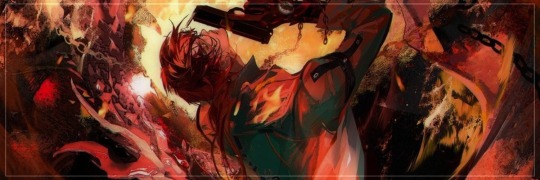
As Mortefi’s secret Santa, you understand that he is a man of precision and order. He values elegance in everything, even the smallest gestures. Knowing that he has an obsession with cleanliness and fine detail, you decide to go for something both practical and refined—a handcrafted, perfectly polished leather journal, with fine gold detailing on the edges, and a beautiful pen set made of rare wood and precious metal.
You know that Mortefi can be irritable when it comes to anything imperfect, but you manage to wrap the gift with exceptional care—his eyes will undoubtedly appreciate the craftsmanship. You add a small, personal note tucked inside, a subtle reference to his fondness for classical music. The message reads: “May this journal help you capture the symphonies of your thoughts, every note as sharp as your mind.”
When Mortefi opens it, his brows furrow in silent approval. "Well... this is adequate." he says, not one for overt displays of gratitude. But you can see the spark of appreciation in his eyes, and for a brief moment, his usually tense demeanor softens.
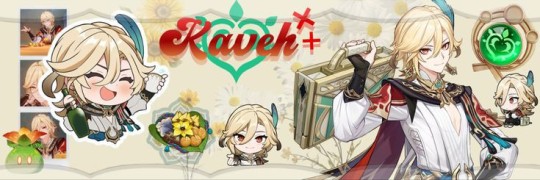
Kaveh’s idealism runs deep, and finding a gift for him is an emotional yet rewarding task. You know that Kaveh values beauty that serves a greater purpose, so you opt for a custom-designed, miniature architectural model of a space that symbolizes hope and kindness—perhaps a small, elegant garden pavilion with elements from Sumeru’s cultural heritage.
The model has intricate details: miniature flowers, a peaceful water feature, and tiny benches where people can rest and reflect. It’s not just a model; it’s a vision of the world Kaveh is always striving to build.
When Kaveh opens the gift, his heart stirs. He pauses before speaking, eyes softening as he looks at the model. "You’ve captured it perfectly." he says quietly, voice thick with gratitude. He places it on his desk as a reminder that despite all the struggles, beauty can still be created in this world.

Aventurine, ever the risk-taker and man of sophistication, would appreciate something a little more personal, yet still tied to his flair for the dramatic. You think of something that embodies both elegance and a sense of mystery—a custom-made deck of playing cards, each card featuring intricate designs that reflect various aspects of his personality. The Joker cards, for example, are styled with roulette wheels and playing cards, while the aces have elements symbolizing different strategic moves or his affinity for risk.
When Aventurine unwraps the gift, a glimmer of recognition lights up his face. "So, this is what you think of me, hmm?" he muses, running his fingers over the smooth edges of the cards. He’s usually all about strategy, but in this moment, you can see the smile that tells you your gift has struck the perfect balance of fun and sophistication.
"Care for a game later?" he asks with a playful glint in his eye, as if he’s always one step ahead. The cards now sit beside his other mementos, each one a reminder of your thoughtful gesture.
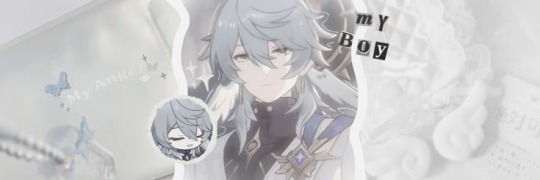
Sunday is a man who values balance and harmony above all, so you choose a gift that is both beautiful and meaningful. You know that his ideals often clash with the harsh realities of life, so you decide on something that symbolizes peace and serenity—an exquisitely crafted snow globe featuring a miniature replica of Sweetdream Paradise.
When Sunday opens it, his expression remains composed, but there’s an undeniable softness in his eyes as he examines the globe. The swirling snow inside the globe seems to mirror the tranquil world he often envisions—a place where pain no longer exists, but with the delicate beauty of impermanence.
“Thank you,” he says, his voice steady but warm. “This… this is a reminder of the world I strive for.” He carefully places it on a shelf, and for a moment, you both share a quiet understanding of the kind of world he wishes to create—one that might never come to be, but is worth dreaming about.

Ratio’s brilliance can make him difficult to shop for. He isn’t one for sentimental gifts, but you also know that he values knowledge above all else. So, you decide to combine practicality with intellectual stimulation by gifting him a rare, ancient manuscript—one that he would never have thought to acquire himself. The book is a long-forgotten treatise on the application of logic in art, beautifully preserved in a leather-bound edition with intricate golden lettering.
When Ratio opens the gift, his eyes immediately lock onto the manuscript, and you can see his usual arrogance soften into genuine admiration. “This is… impressive. You actually paid attention,” he mutters, flicking through the pages with a hint of excitement. His usual dismissiveness fades as he delves into the contents. "This will be useful. Thank you."
While he may not express overwhelming emotion, the way he later references passages from the manuscript as if they are his own ideas shows just how much your gift means to him. The small smile he tries to suppress is enough of a thank you.

#honkai star rail#hsr#x reader#honkai star rail x reader#hsr x reader#hsr aventurine#aventurine x reader#aventurine x you#hsr aventurine x reader#hsr sunday x you#sunday x reader#sunday hsr#ratio x reader#hsr dr ratio#hsr ratio#kaveh x y/n#kaveh x reader#wuwa mortefi#mortefi x reader#fluff#gift giving#romance#sincere gestures#thoughtful gifts#lighthearted moments#wuthering waves x you#wuthering waves mortefi#winter special#secret santa#kaveh x you
165 notes
·
View notes
Text
The Pokémon Company International and Aardman have announced a special project coming in 2027. The collaboration will see Aardman bringing their unique style of storytelling to the Pokémon universe in brand-new adventures. Taito Okiura, VP of Marketing and Media at The Pokémon Company International, commented, “This is a dream partnership for Pokémon. Aardman are masters of their craft, and we have been blown away by their talent and creativity. What we have been working on together ensures our global Pokémon fans are in for a treat!” Sean Clarke, Managing Director of Aardman, added, “It’s a huge honor to be working with The Pokémon Company International — we feel sincerely privileged to be trusted with bringing their characters and world to life in a brand-new way. Bringing together Pokémon, the world’s biggest entertainment brand, together with our love of craft, character and comedic storytelling feels incredibly exciting. Aardman and TPCi share an emphasis on heritage and attention to detail as well as putting our fans and audiences at the heart of what we do, which we know will steer us right as we together create charming, original and new stories for audiences around the world” More information on the collaboration is planned to be shared in the future.
149 notes
·
View notes
Text
From Archives to Adventures: How InheritageX Helps You Discover Your Lineage
In today’s fast-paced world, the need to reconnect with our roots has become more important than ever. Whether it’s a sense of identity, pride in one’s ancestry, or a desire to explore the rich cultural tapestry woven through generations, InheritageX stands at the forefront of this genealogical renaissance. More than just a platform for tracing family trees, InheritageX is a gateway to the World Heritage Crafts and Traditional Indian Crafts that form the bedrock of many cultures.

Unveiling Your Heritage with InheritageX
At its core, InheritageX is designed to provide users with an immersive journey into their past, allowing them to trace their ancestry with accuracy and depth. The platform’s user-friendly interface makes it easy for anyone, regardless of their technical knowledge, to begin their exploration. Whether you have detailed information about your ancestors or are starting with only a name, InheritageX offers tools that guide you through every step.
What sets InheritageX apart is its deep integration with historical archives and databases, ranging from government records to rare personal manuscripts. These documents provide detailed insights into one’s ancestry, going far beyond just names and dates. They open doors to understanding the crafts and traditions passed down through generations.
Preserving and Promoting Traditional Indian Crafts
India’s rich cultural heritage is deeply intertwined with its craftsmanship, with Traditional Indian Crafts representing a significant part of its history. From intricate handwoven textiles to the delicate art of pottery and jewelry making, these crafts are not just products but symbols of the communities that created them. Through InheritageX, users have the unique opportunity to discover the Traditional Indian Crafts their ancestors were involved in.
The platform provides detailed descriptions of various crafts, such as:
Handloom Weaving: An art that has been passed down through generations in many Indian families. This ancient technique produces exquisite fabrics, including Banarasi silk and Pashmina wool, which continue to be revered worldwide.
Block Printing: A traditional technique for printing patterns on textiles, prevalent in Rajasthan and Gujarat. With InheritageX, users can explore how this craft evolved within their lineage and the role their ancestors played in preserving it.
Terracotta Pottery: A traditional art form practiced for centuries, terracotta pottery is known for its earthy charm and practicality. Through InheritageX, you can learn how this craft was a part of your heritage and see its impact on your cultural identity.
By rediscovering these traditional crafts, InheritageX not only highlights their significance but also helps in their preservation. As a user, you will gain an appreciation for the artisanal skills of your forebears and may even be inspired to support modern artisans continuing these legacies.
World Heritage Crafts: A Global Connection
Beyond Indian crafts, InheritageX allows users to explore the World Heritage Crafts that are part of their ancestry. Whether your lineage traces back to Europe, Africa, Asia, or the Americas, the platform provides access to a vast repository of information on heritage crafts from across the globe.
Some of the most fascinating World Heritage Crafts that users can explore include:
African Beadwork: This traditional art form, known for its vibrant colors and intricate patterns, has been passed down through generations across many African cultures. By uncovering these historical connections, InheritageX helps you understand the role that beadwork played in your lineage.
Japanese Pottery: The art of pottery has a long history in Japan, with many families practicing this craft for centuries. With InheritageX, you can explore how these artistic traditions influenced your ancestors and gain a new appreciation for the craftsmanship involved.
European Embroidery: From the detailed tapestries of France to the delicate lacework of Italy, European embroidery represents a rich heritage that is still cherished today. InheritageX offers insights into how these crafts may have been a part of your family’s history.
Through InheritageX, you can gain access to an expansive collection of resources on the World Heritage Crafts that are part of your personal history. This allows you to explore the artistic traditions that shaped the world, giving you a broader understanding of your lineage.
InheritageX: More Than Genealogy
While genealogy is often seen as a way to trace family trees, InheritageX takes it a step further by connecting users to the crafts, customs, and traditions that their ancestors practiced. By doing so, it provides a richer, more immersive experience that goes beyond simple names and dates.
The platform’s focus on both Traditional Indian Crafts and World Heritage Crafts highlights the interconnectedness of culture, craft, and family. It enables users to explore not just who their ancestors were, but what they did, what they valued, and the skills they passed down through generations.
How InheritageX Helps Preserve Craftsmanship for Future Generations
In addition to helping individuals discover their past, InheritageX plays a critical role in preserving cultural craftsmanship for future generations. The platform works closely with artisans and cultural preservation organizations to document and promote endangered crafts. By doing so, it ensures that these valuable traditions are not lost to time but are passed down to new generations.
Users of InheritageX can support these efforts by:
Learning about endangered crafts and their significance.
Supporting artisans through direct purchases or donations.
Participating in workshops and events that aim to preserve traditional craftsmanship.
By connecting users to their heritage in such a meaningful way, InheritageX empowers individuals to become active participants in the preservation of their cultural legacy.
A Platform Built for the Future
As technology continues to evolve, InheritageX remains at the cutting edge of genealogical research. The platform’s commitment to innovation is reflected in its use of artificial intelligence, which helps users uncover previously unknown connections in their ancestry. This ensures that users have access to the most comprehensive genealogical data available, while also enabling them to explore their family’s history in ways that were previously impossible.
Whether you’re interested in tracing your ancestry back to its roots, learning about the crafts your ancestors practiced, or supporting the preservation of traditional crafts, InheritageX is the platform for you. It offers an unparalleled experience that connects you to your past and helps ensure that your family’s legacy is preserved for future generations.
0 notes
Text
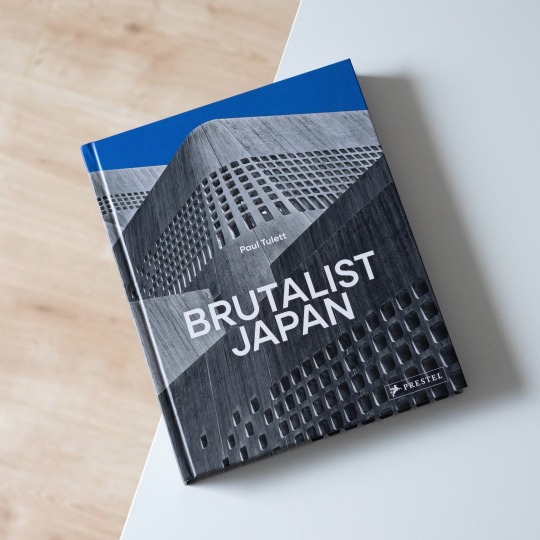

The built manifestations of Brutalism, despite their omnipresence on social media, remain controversial: especially in Europe they are loved by some and hated by many. In other parts of the world opinions aren’t as polarized and Brutalism simply a part of the built environment, e.g. in Japan. Okinawa-based photographer Paul Tulett has been exploring the Japanese brutalist heritage for years and in his new book „Brutalist Japan“, recently published by Prestel, points to the particular appeal concrete had in postwar Japan: it offered seismic safety, was resistant to termites and easy to pour in form and via the shuttering boards also left room for the skilled Japanese wood crafts. At the same time the Japanese tradition for leaving natural materials rough and raw played in the hands of „béton brut“ that, as Tulett explains, became „béton nécessaire“.
The former’s gradual aging and the acceptance thereof agains roots in Japanese tradition, i.e. the concepts of „wabi sabi“ and „mono no aware“ which embrace the beauty of imperfection and describe the ambivalent awareness of the fleeting nature of beauty. Against this background and Tulett’s introduction to Japanese philosophies it becomes easier to understand why Brutalism is a lot less controversial in Japan than it is in other parts of the world and never disappeared. Accordingly the buildings gathered in „Brutalist Japan“ date from the 1950s to the present day and offer a comprehensive panorama of Brutalism in Japan: in brilliant photographs Tulett shows classics like Kenzo Tange’s Hiroshima Peace Memorial Museum (1955) and Setagawa Ward Office (1959) or Le Corbusier’s National Museum of Western Art (1959) but also a plethora of little-known buildings. And they are compelling: the fortress-like Tanimura Art Museum (1983) by Togo Murano, the Keihan Uji Station (1995) by Hiroyuki Wakabayashi or the Okinawa Prefectural and Art Museum (2007) by Ishimoto and Niki Associates demonstrate the masterful use of raw concrete while also dealing with Japanese history and traditions.
This beautifully crafted mix of buildings makes the book a great read and an eye-opening survey of Japanese Brutalism. Highly recommended!
202 notes
·
View notes
Text
Ink!Sans Cultural Inspiration
(revised version)
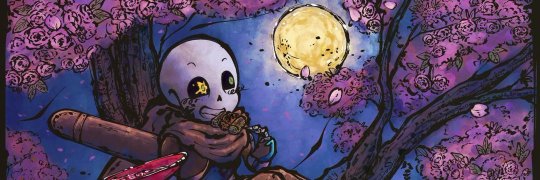
art by @/sakuramochi64 on twitter
Disclaimer!
This post aims to explore and analyze both the prominent and subtle East Asian cultural influences—primarily Japanese—that have shaped the character of Ink!Sans. By examining these influences, we can better understand how traditional East Asian aesthetics and artistic practices are woven into Ink’s design and powers. If any information in this essay is inaccurate or unintentionally offensive, please don’t hesitate to reach out! This essay serves as a revised and updated version of the analysis conducted last year, incorporating new insights and refined perspectives to enhance our understanding of Ink!Sans’s character and his cultural influences.
Ink!Sans by @comyet/@myebi
↓↓↓↓↓↓↓↓↓↓↓↓↓↓↓↓↓↓↓↓↓↓↓↓↓↓↓↓↓
.
.
.
.
''It was a night where it felt like i was a miserable artist and i was very frustrated at my work and it felt like i wasn’t worth alot (we all have these), then I came across a picture of a japanese ink brush, and it was all I needed to start doodling a concept.
That’s how Ink is born.''
.
.
According to Ink’s creator, Comyet, the idea for Ink!Sans was sparked by an image of a brush specifically crafted for sumi and Chinese ink art. In China, the tradition of using specialized ink brushes, known as Chinese writing brushes, has been a foundational element in the art of calligraphy and traditional painting for centuries. These brushes are highly valued for their precision and versatility, allowing artists to produce a range of strokes, from fine lines to bold, expressive swashes. The brush itself is composed of a bamboo handle and a carefully tapered head made from animal hair, designed to hold and release ink in controlled flows.
This tool became central not only in Chinese culture but also influenced Japanese, Korean, and Vietnamese art, where calligraphy holds a similar cultural significance and is closely tied to writing systems derived from Chinese characters. These brushes symbolize the control, fluidity, and intentionality required in both written language and visual art across East Asia. This deep-rooted cultural importance of the ink brush inspired Ink!Sans's character design and powers, allowing him to wield 'ink-based' abilities, symbolizing both creativity and adaptability. His main weapon—a brush—reflects this heritage and further emphasizes the connection between art and battle, as he channels the brush’s traditional associations with fluidity and strength into his fighting style, merging the arts of calligraphy and combat.
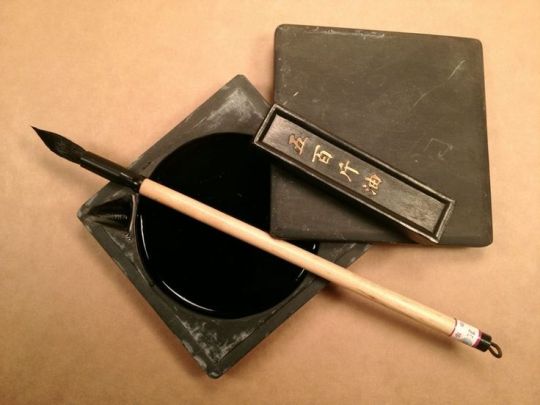
(visual example of an ink calligraphy brush)
At glance, the ink material is an enduring medium that still surrounds society till this day and it's used in multiple cultures across the world.
Writing with ink calligraphy brushes is also common in Europe and the Middle East, where artisans developed ink using a unique combination of iron salts and oak galls. This type of ink, known as iron gall ink, initially appeared in rich, dark tones, making it highly desirable for manuscripts and official documents due to its bold, readable quality. However, over time, the iron in the ink oxidized, resulting in a distinct color shift to warm, rust-like brown tones. This characteristic fading can still be observed today in ancient manuscripts, such as early European literary works, where the reddish-brown hues give a sense of history to these documents. The durability and aesthetic appeal of iron gall ink contributed significantly to its prevalence in both regions, influencing the artistry of calligraphy and manuscript illumination for centuries.
Like previously mentioned, Ink!Sans was inspired by traditional ink materials developed in East Asia, where artisans mastered the creation of carbon-based black ink, often using soot or charcoal mixed with binding agents like animal glue. This type of ink, known for its rich, deep color and lasting durability, was a staple in East Asian calligraphy and artwork. Unlike iron gall ink, this carbon-based ink maintained its dark, almost jet-black color for centuries, even in varying environmental conditions. The resilience of this ink allowed ancient texts, paintings, and scrolls to retain their striking contrast and clarity, making it a celebrated medium in East Asian art and culture. Ink!Sans draws inspiration from this enduring quality, symbolizing strength, creativity, and the timelessness of artistic expression

(visual example of an ancient art piece that used carbon-based black ink)
To note, unlike iron gall ink, carbon based inks are still very common to this day.
Although the primary Chinese calligraphic scripts were well established by the fourth century, calligraphy as an art form has continually evolved over the centuries, adapting to new cultural and aesthetic influences. Skilled calligraphers, who spent years mastering brush techniques and perfecting their own unique hand, were celebrated for their distinctive styles, and their works became templates for both art and personal expression. Over time, subsequent generations of artists studied these revered styles, incorporating and reinterpreting them to reflect their individual voices and the changing social landscapes. This ongoing transformation has kept Chinese calligraphy dynamic and relevant, and it remains a respected art form today, blending tradition with contemporary aesthetics.
In Japan, calligraphy also held deep cultural significance, symbolizing both personal refinement and intellectual achievement. Calligraphy was regarded as a mark of scholarly sophistication and artistic taste, with a variety of tools developed to enhance the writing experience. One notable example is the suzuribako ("ink stone box"), a portable lacquered wood box designed to store an inkstone, water dropper, brushes, and solid ink sticks. These boxes were crafted with precision and adorned with intricate lacquer designs, reflecting their owner’s status and appreciation for art. Suzuribako were lightweight and convenient, enabling calligraphers to take their tools outdoors or to scenic locations to write letters, diary entries, or poetry. This practice not only facilitated creativity but also connected the act of writing with nature, creating an immersive experience where one could find inspiration in the surrounding beauty while crafting words in elegant brushstrokes. The combination of these refined tools and settings underscored calligraphy’s role as a deeply personal and aesthetic pursuit in Japanese culture.
From this perspective, it is essential to highlight that Ink's character draws inspiration from traditional ink calligraphy, a detail reflected in his distinctive speech font, 'Note This'.

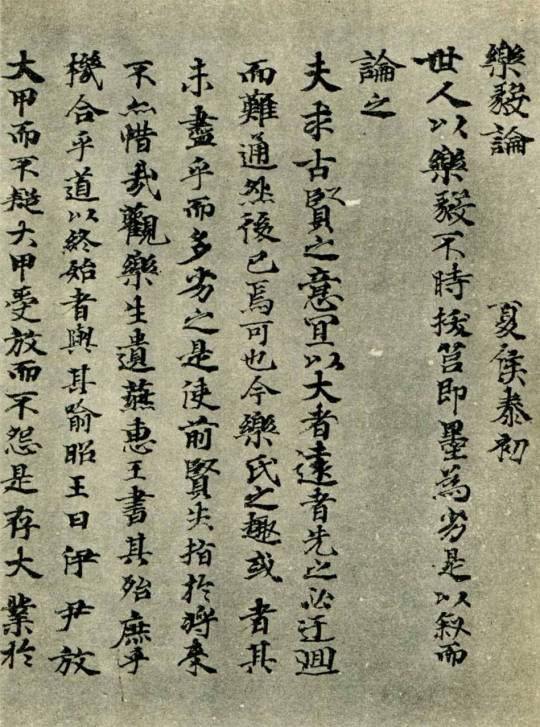
(Example of Ink's canon speaking font and ancient calligraphy)
Also clarified in an ask on her side blog, Comyet explained that traditional samurai clothing served as a key inspiration for Ink's outfit redesign in 2020. Ink's creator thoughtfully incorporated these characteristics to enhance Ink’s visual appeal and connection to his main source of inspiraton. This influence is particularly noticeable in the first and second analyses of Ink's character, where we see clear visual cues from iconic Japanese garments like the hakama.
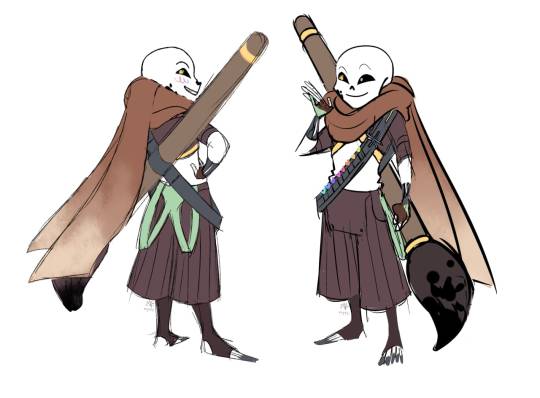
(Ink!sans reference sheet for the 2020 design, credit goes to @/comyet)
Ink's pants were inspired by hakama, a traditional Japanese garment known for its distinctive design as skirt-like trousers, typically worn over a kimono. Hakama are historically associated with a range of activities, from ceremonial occasions to martial arts, and are often considered a symbol of status and refinement. Specifically, Ink's pants appear to be inspired by the umanori style of hakama, which is characterized by a split or division in the middle, allowing for greater freedom of movement. This style was traditionally worn by samurai and other individuals involved in horseback riding, as the design allowed for ease of movement and flexibility when mounting or riding a horse.

The umanori hakama were not only practical for riding but also served as a functional yet elegant garment, embodying the balance of form and function typical in Japanese clothing. By incorporating this style into Ink's character design, Comyet likely intended to evoke themes of mobility, agility, and strength, while subtly referencing Japanese martial traditions and the samurai ethos. This choice enhances Ink's overall aesthetic, highlighting his dynamic, action-oriented nature, suggesting that his character is both rooted in tradition and capable of fluid, graceful movement.
The hakama was not merely a functional garment but also a powerful symbol of social status, loyalty, and the samurai's role in Edo society. While the hakama was predominantly worn by samurai, it also found its place in the wardrobe of scholars, priests, and members of the aristocracy, who wore it as part of their ceremonial dress.
Furthermore, Comyet has explained that Ink's outfit and appearance were partially inspired by the clothing worn by samurai, as depicted in ukiyo-e prints from the Edo Period of Japan. Ukiyo-e, which translates to 'pictures of the floating world,' was a popular genre of woodblock prints and paintings that flourished from the 17th to the 19th centuries, showcasing scenes of everyday life, landscapes, kabuki actors, and beautiful women. However, samurai were also common subjects of these prints, often portrayed in full regalia, highlighting their status and discipline.

(this line of text was found within old versions of Ink's FAQ post, mainly from 2020-2021)
In these ukiyo-e representations, samurai are frequently depicted wearing a distinctive combination of garments, including elaborate kamishimo (formal attire worn by samurai), hakama (wide trousers), and haori (a kimono-style jacket worn over the kimono), along with ornate accessories such as sashes and swords. These samurai were often shown in dynamic poses, suggesting a sense of power, grace, and readiness for battle, which reflected their societal role as both warriors and landowners.
Ukiyo-e representations of samurai often carried deeper meanings beyond their visual impact. Samurai in these prints were more than just warriors; they were cultural icons, symbols of virtue, duty, and sacrifice. Some prints portrayed samurai in the context of popular stories or historical events, such as famous battles or legendary acts of heroism. For example, the prints often depicted samurai as loyal retainers or leaders fighting for justice, reflecting the ideal of bushidō, the samurai code of ethics, which emphasized virtues like loyalty, courage, and respect.
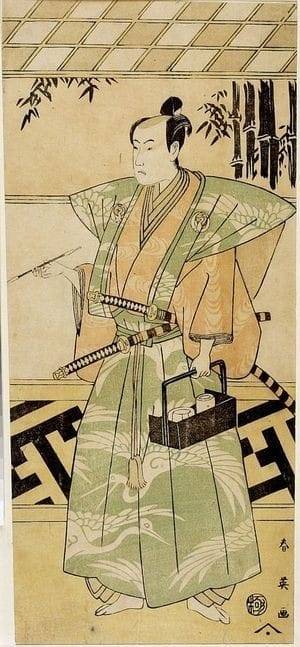
(Ukiyo-e art made by Katsukama Shun'ei, Edo Period)
During the Edo period, the hakama was an important garment worn by the nobility as part of their formal attire, complementing other traditional outfits of the time, such as the noshi and kariginu, a sleeveless jacket with distinctive, sharply defined shoulders. These garments were designed to symbolize the status and refined taste of their wearers. The hakama, with its wide, flowing silhouette, was highly functional and practical, allowing for ease of movement while maintaining an air of elegance.
On another note, Ink's design is not the only aspect influenced by Japanese culture; the musical themes associated with him also draw significant inspiration from traditional Japanese music, as described by Comyet. The incorporation of these musical elements into Ink's character enhances the depth and cultural resonance of his persona, creating a multi-layered experience that ties his abilities, appearance, and thematic representation to a broader cultural context.
A predominant theme associated with Ink that highlights his deep inspiration from traditional Asian styles is one called 'BrushWork.' This musical theme, featured in the popular series Underverse, plays a crucial role in reflecting Ink’s connection to East Asian culture, particularly through its use of the shamisen, a traditional Japanese stringed instrument, and a flute. The choice of the shamisen in this composition is significant, as it evokes the soundscape of Japan, with its distinct, plucked tones often associated with traditional music, storytelling, and performance arts.
The shamisen is a core instrument in genres such as kabuki (a traditional form of Japanese drama) and bunraku (puppet theater), where it is used to underscore the emotional intensity and narrative depth of the performances. In BrushWork, the shamisen helps set the tone for Ink’s character, enhancing the theme of 'brushwork' through its fluid, emotive sound.
Honorable mention: The instrumental video for ''Soulless Heart'', features an artwork that is inspired by traditional sumi-e (ink wash painting), a Japanese art form renowned for its elegant brushwork and minimalistic yet profound depictions of nature. This particular artwork, which accompanies the music, was created by the talented artist @/sakuramochi64, whose style reflects the delicate balance and graceful simplicity typical of sumi-e paintings.
.
.
.
Sources
1.National Museum of asian art (materials & techniques. Ink section)
2. Asian Brushpaper (an-overview-of-chinese-ink-history)
3. Wikipedia (wiki Hakama-pants+Shamisen)
4. Aikido Journal (Hakama-101)
183 notes
·
View notes
Text
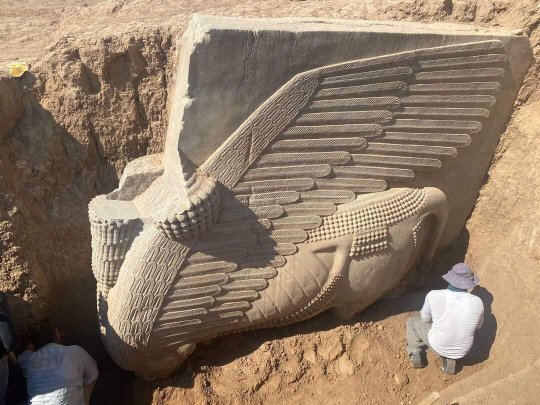
Ancient Assyrian Deity Statue Uncovered in Iraq
In a recent announcement from the The Iraqi State Board of Antiquities and Heritage (SBAH), archaeologists have successfully unearthed a remarkable ancient Assyrian deity statue known as a “lamassu” in Kursbad, Iraq.
A lamassu is a special Assyrian guardian deity, usually portrayed as a mix of human, bird, and either cow or lion features. These unique beings typically have a human-like head, a body resembling that of a bull or lion, and bird-like wings.
Guardian Lamassu sculptures in Assyria
In ancient Assyria, they often crafted pairs of lamassu sculptures and placed them at the entrances of palaces. These imposing figures faced both the streets and the inner courtyards.
What’s unique about these sculptures is that they were carved in high relief. When you look at them head-on, they seem still, but from the side, they appear to be in motion.
While we often see winged figures in the low-relief decorations inside rooms, lamassu were not commonly found as large figures in these spaces. However, they occasionally appeared in narrative reliefs. In these depictions, they seemed to take on the role of protectors for the Assyrians.
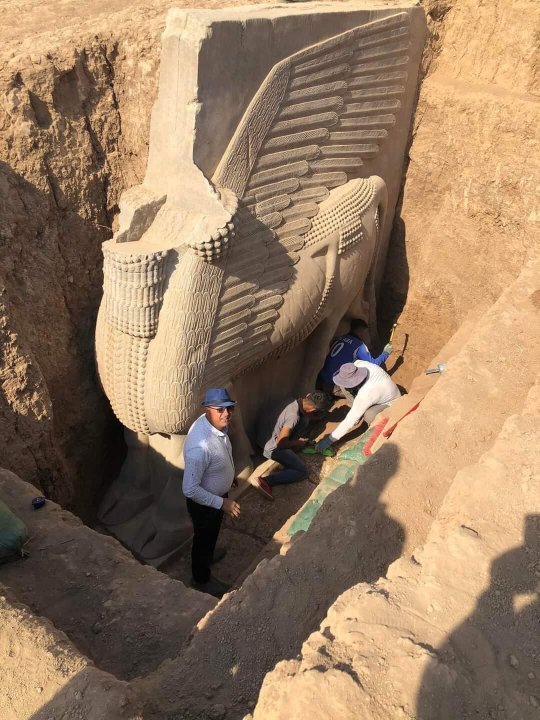
Ancient Assyrian deity statue in Iraq was discovered and then reburied
This discovery took place during their excavations at the 6th gate, situated in the western part of the ancient city of Khursbad.
Khursbad was originally built as a brand-new capital city by the Assyrian king Sargon II. He started this ambitious project shortly after he became king in 721 BC.
However, after Sargon II’s reign, his son and successor, Sennacherib, decided to shift the capital to Nineveh. This move left the construction of Khursbad unfinished, making it a fascinating historical puzzle.
As per the press release, the statue was originally discovered in 1992, when a team of Iraqi archaeologists stumbled upon the Assyrian deity statue. After the initial discovery of the lamassu, its head was unfortunately stolen in 1995. However, it was later recovered and is now safely preserved in the Iraqi Museum.
The main body of the Assyrian deity, was reburied to protect the statue and the surrounding architectural remains, a decision that likely saved it from destruction by ISIS, which systematically looted and destroyed the remains of Khursbad.
Collaboration between Iraqi and French archaeologists
In a remarkable collaborative effort between Iraqi and French archaeologists, Professor Dr. Ahmed Fakak Al-Badrani has spearheaded a mission that recently re-excavated the lamassu. This event marks the first time in thirty years that this ancient wonder has been unveiled to the world.
As stated by Dr. Layth Majid Hussein, the Chairman of the General Body for Archaeology and Heritage, the team is presently evaluating the condition of the lamassu to chart their forthcoming actions.
By Nisha Zahid.


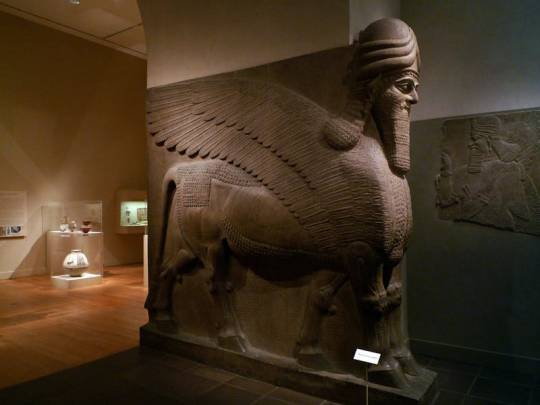
#Ancient Assyrian Deity Statue Uncovered in Iraq#Kursbad Iraq#lamassu#sculpture#stone sculpture#ancient artifacts#archeology#archeolgst#history#history news#ancient history#ancient culture#ancient civilizations#assyrian history#assyrian empire#ancient art
527 notes
·
View notes
Text
Lonely Mountain = Armenia
I have a take to make: Armenian culture is very similar to how I would imagine the culture of the Dwarves of Lonely Mountain.
When you think of the halls of Erebor, images of grand stone halls, intricate metalwork, and proud, resilient people come to mind.
Interestingly, this mental imagery resembles Armenia, a rich and ancient civilization in the Southern (that is important - Armenians are not Caucausians per se, like Georgians and/or Dagestanians) Caucasus region. From the stone-borne proud spirit of the Armenian people to their architecture and traditional clothing, there are fascinating parallels between the two cultures, real and fictional.
1. Architecture: Stone, Fortresses, and Underground Structures
The Dwarves of Erebor are renowned for their skill in mining and stonework, creating vast underground cities with intricate carvings and fortifications. Similarly, Armenian architecture is marked by the use of stone, with many historical fortresses, churches, and monasteries built using basalt, tuff, and other locally sourced materials. These buildings, often nestled in mountainous regions, reflect a deep connection to the earth, much like the Dwarven kingdom carved within the Lonely Mountain.
Examples:
Geghard Monastery: Partially carved out of mountain rock, this UNESCO World Heritage site demonstrates the skill and artistry of Armenian stonework. Its cavernous halls and intricate carvings are reminiscent of the Dwarven halls deep within Erebor.
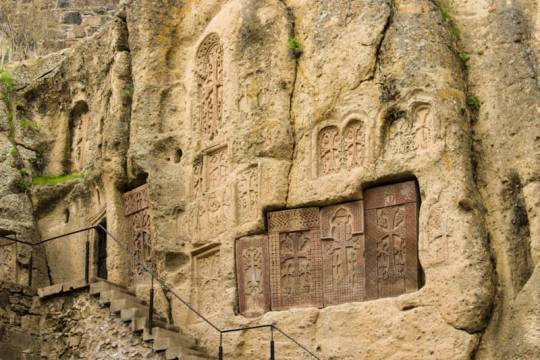
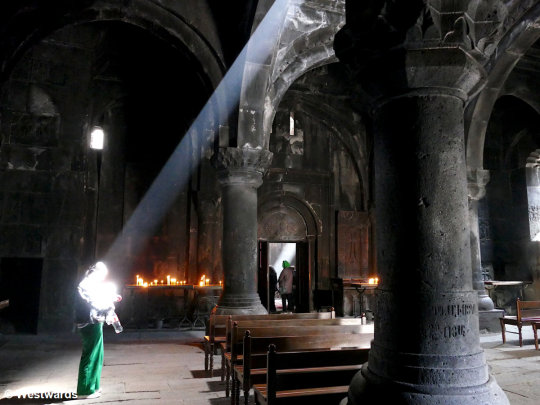
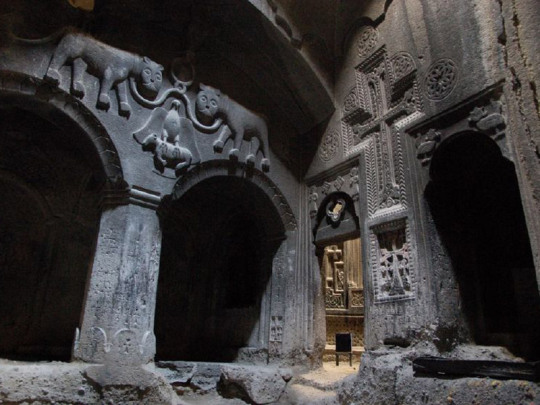
Tatev Monastery: Perched on the edge of a cliff, this fortress-like monastery reflects the grandeur and defensive nature of Dwarven architecture.
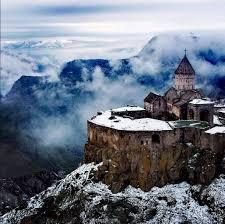
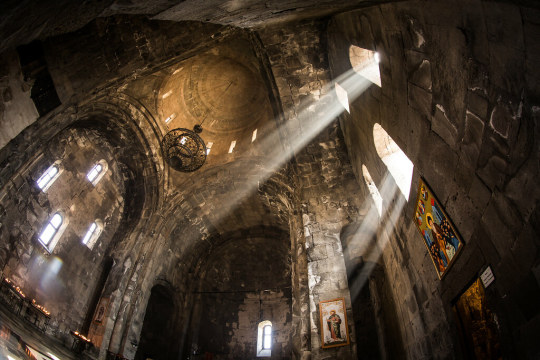

2. Traditional Clothing: Regal, Rich, and Embroidered
Tolkien’s Dwarves are often depicted in elaborate, layered garments with intricate patterns, a testament to their pride in craftsmanship. Armenian traditional clothing, especially royal and ceremonial attire, shares this emphasis on richness and detail. Armenian robes from different historical periods were made from fine fabrics, often embroidered with gold and adorned with jewels, echoing the regal appearance of Dwarven kings and warriors.
Examples:
Royal Armenian Attire: The robes of Armenian kings and nobles during the medieval period were crafted from rich fabrics and detailed embroidery. Visuals of King Gagik I or the attire from the Bagratid dynasty era would illustrate the parallels well.
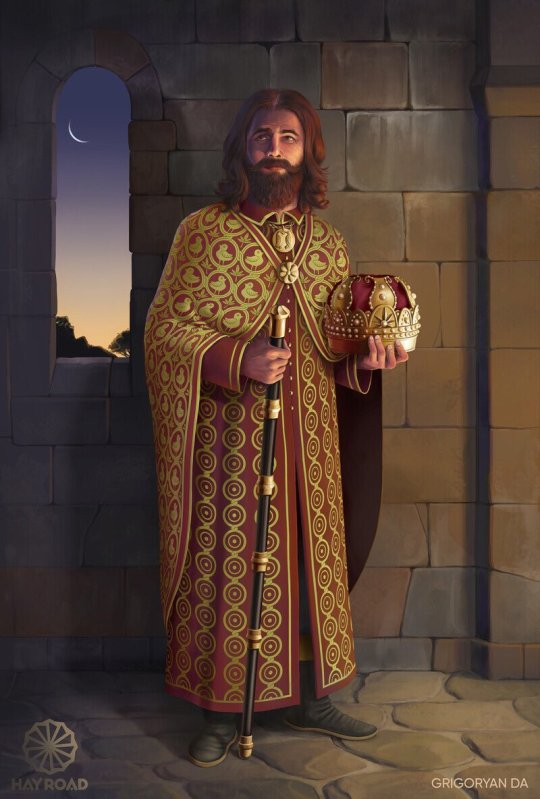
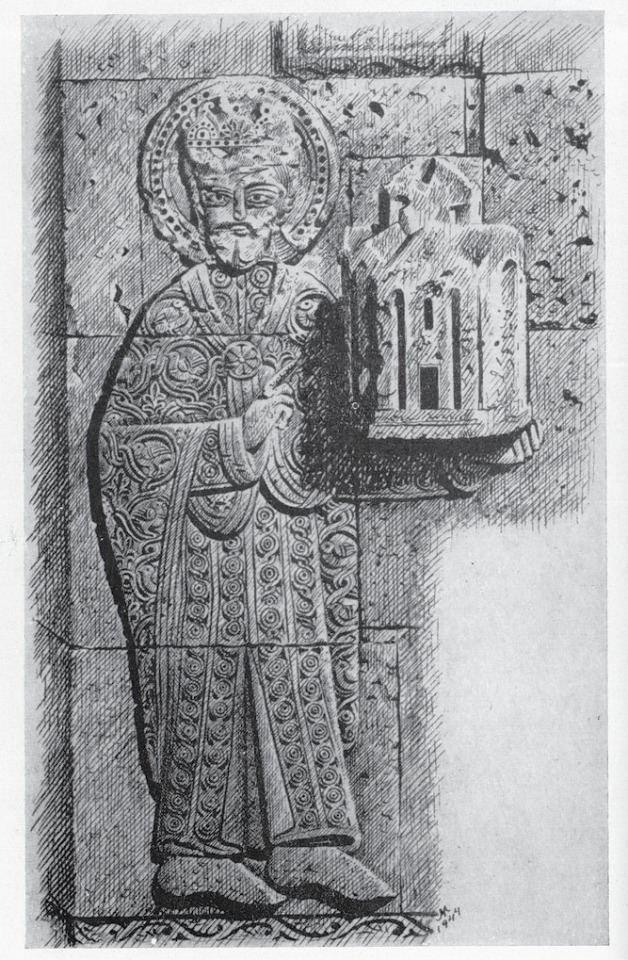
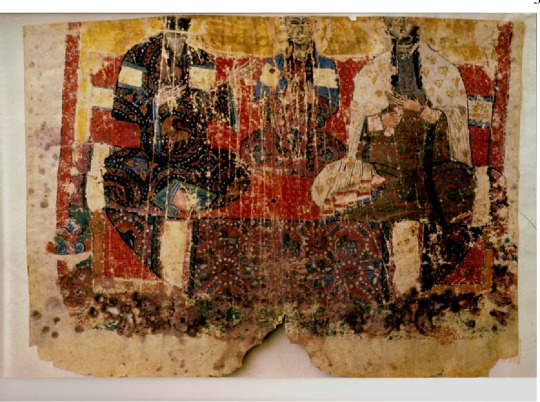
Women’s Embroidered Dresses: Traditional women’s dresses from regions like Syunik and Artsakh, adorned with intricate patterns and gold-thread embroidery, reflect a similar pride in craftsmanship seen in Dwarven culture.
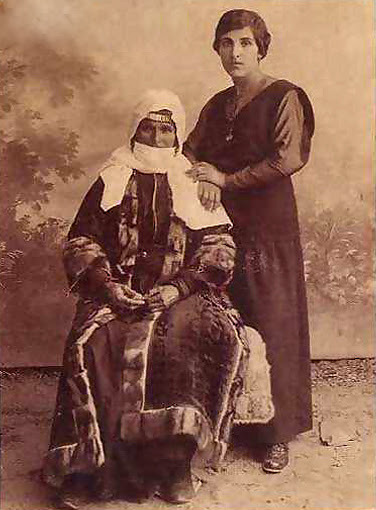
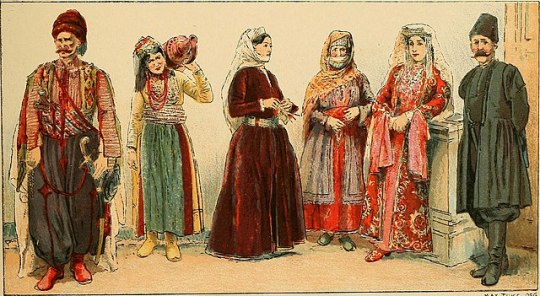
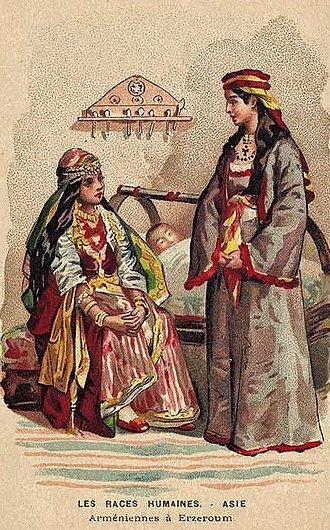
3. Craftsmanship: The Art of Metalwork and Jewelry
The Dwarves are famous for their skills as blacksmiths, miners, and jewelers, creating intricate items from precious metals. Armenia, with its long history of metallurgy, also boasts a rich tradition of metalwork and jewelry-making. Armenian craftsmen were known for producing exquisite silver and gold pieces, ranging from church crosses to ceremonial weaponry and jewelry.
Examples:
Armenian Crosses and Jewelry: The detailed filigree and gem-inlaid designs seen in Armenian religious artifacts show a high level of skill. These pieces could easily be imagined as treasures from the hoards of Erebor.
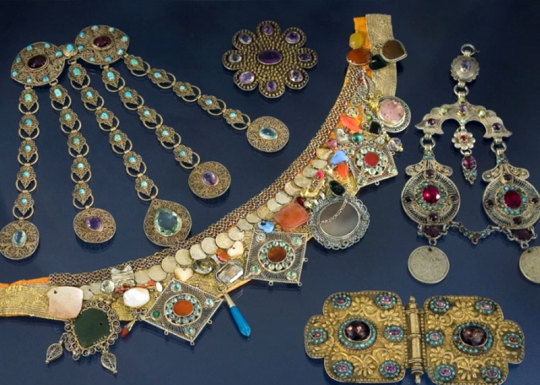


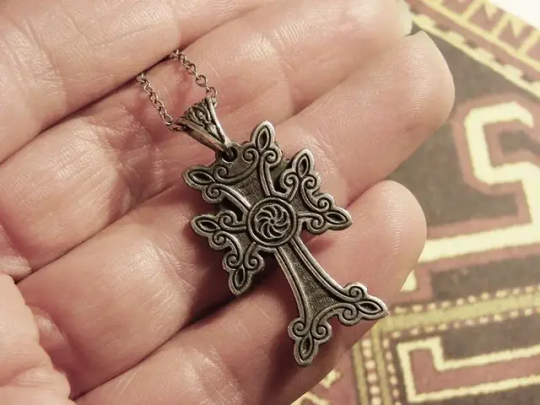
Ceremonial Swords and Armor: Historical Armenian weaponry, including richly adorned swords and shields, can also be found in museums. Their craftsmanship mirrors the care and pride of Dwarven smiths.
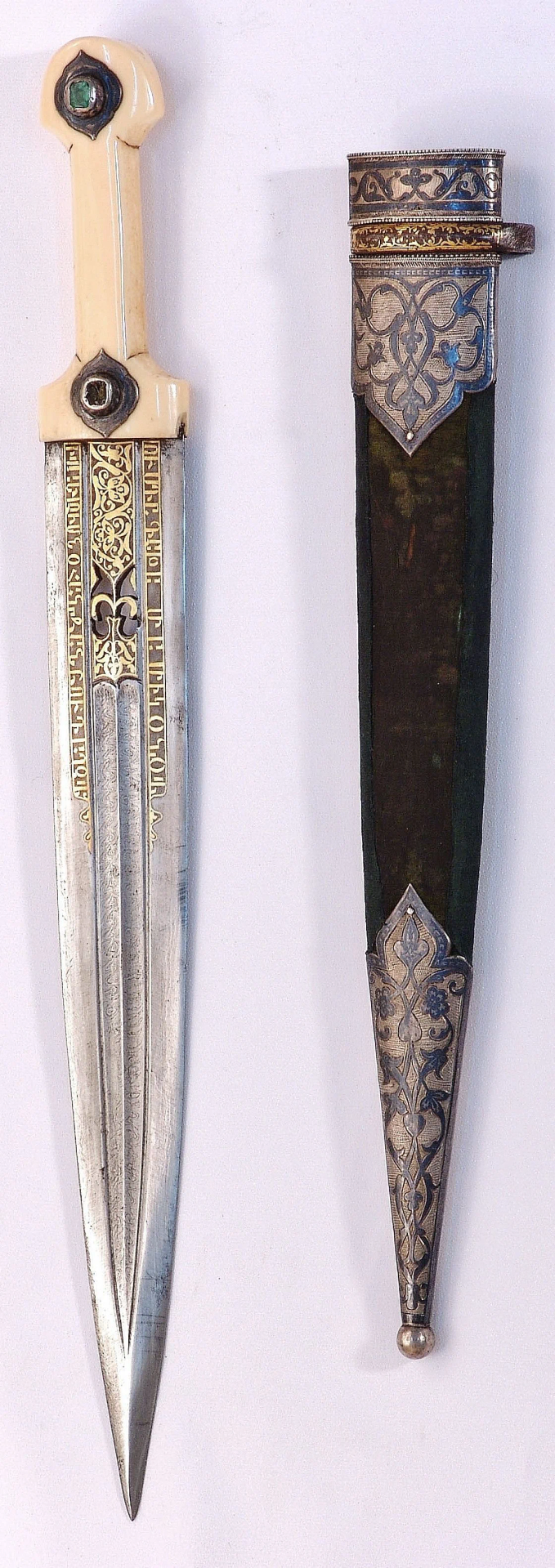
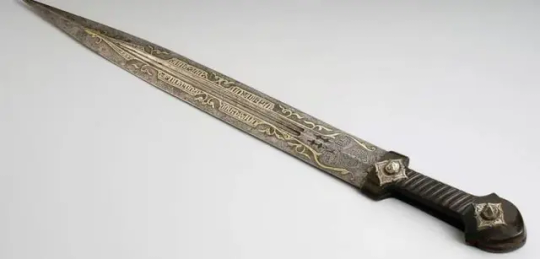
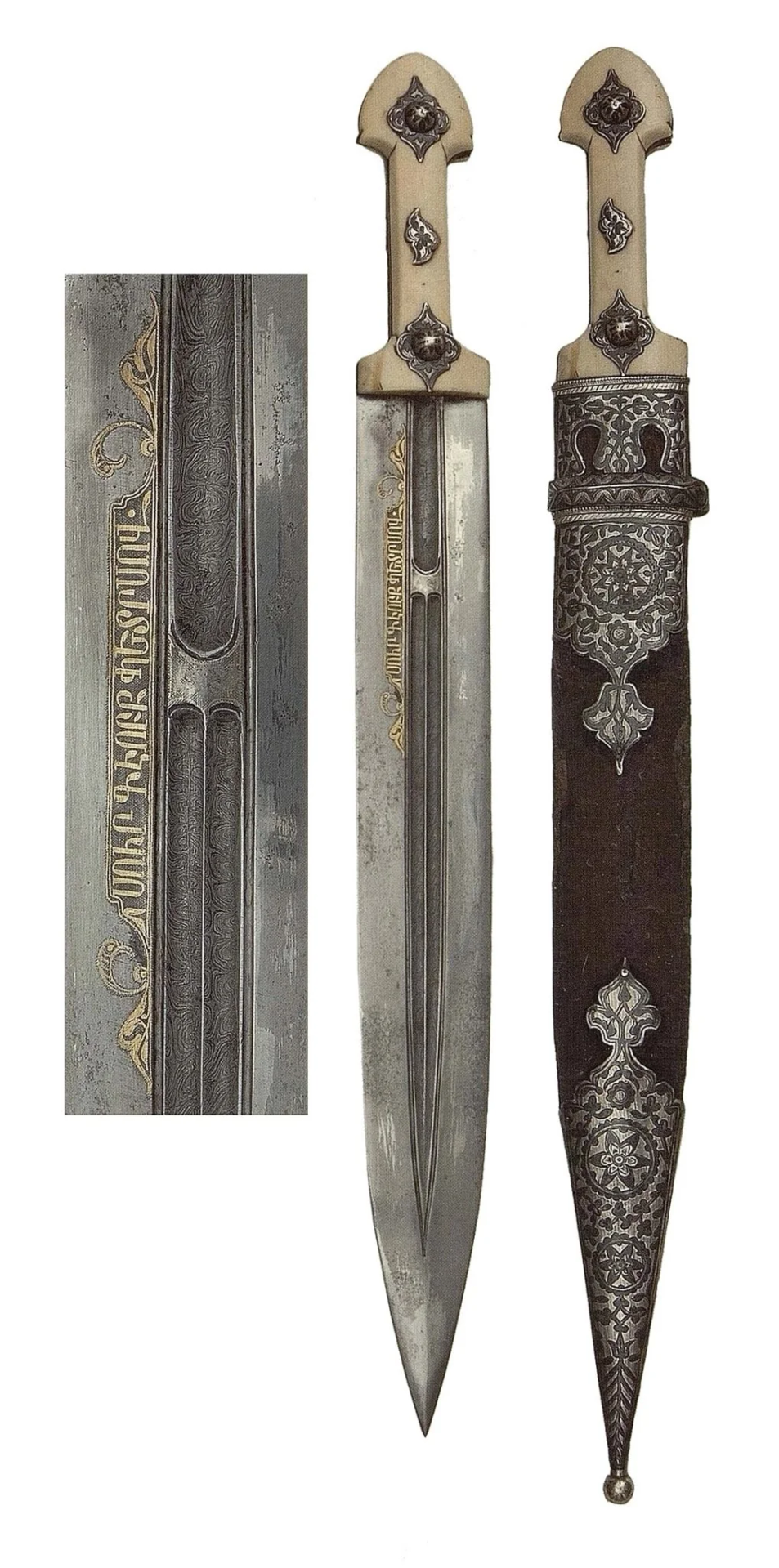
4. Resilience and Pride: A Shared Spirit of Survival
Both the Armenians and the Dwarves have a shared history of resilience and pride in their heritage. The Dwarves, displaced from their homeland of Erebor, strive to reclaim their lost kingdom, a narrative that echoes the Armenian struggle throughout history to preserve their culture and identity in the face of invasions and displacement.
Armenian history is marked by perseverance, whether through the maintenance of cultural traditions, language, or faith, even during periods of hardship. The Dwarves' determination to return to Erebor, despite the dangers, reflects a similar strength.
Examples:
Armenian Genocide Memorials: These monuments, while somber, speak to the resilience and enduring spirit of the Armenian people. They stand as a testament to survival, much like the return of the Dwarves to Erebor.


Mount Ararat: The iconic mountain, which has a deep connection to Armenian identity, is often depicted in art. It symbolizes endurance, much like the Lonely Mountain symbolizes hope for the Dwarves.



Conclusion
While there is no evidence that J.R.R. Tolkien based the Dwarves of Erebor on any specific real-world culture, the similarities between Dwarven and Armenian culture are striking. Both are defined by a love of stone, a tradition of intricate craftsmanship, and a deep-rooted pride in their heritage. These parallels offer a fascinating way to look at Tolkien's world.
109 notes
·
View notes